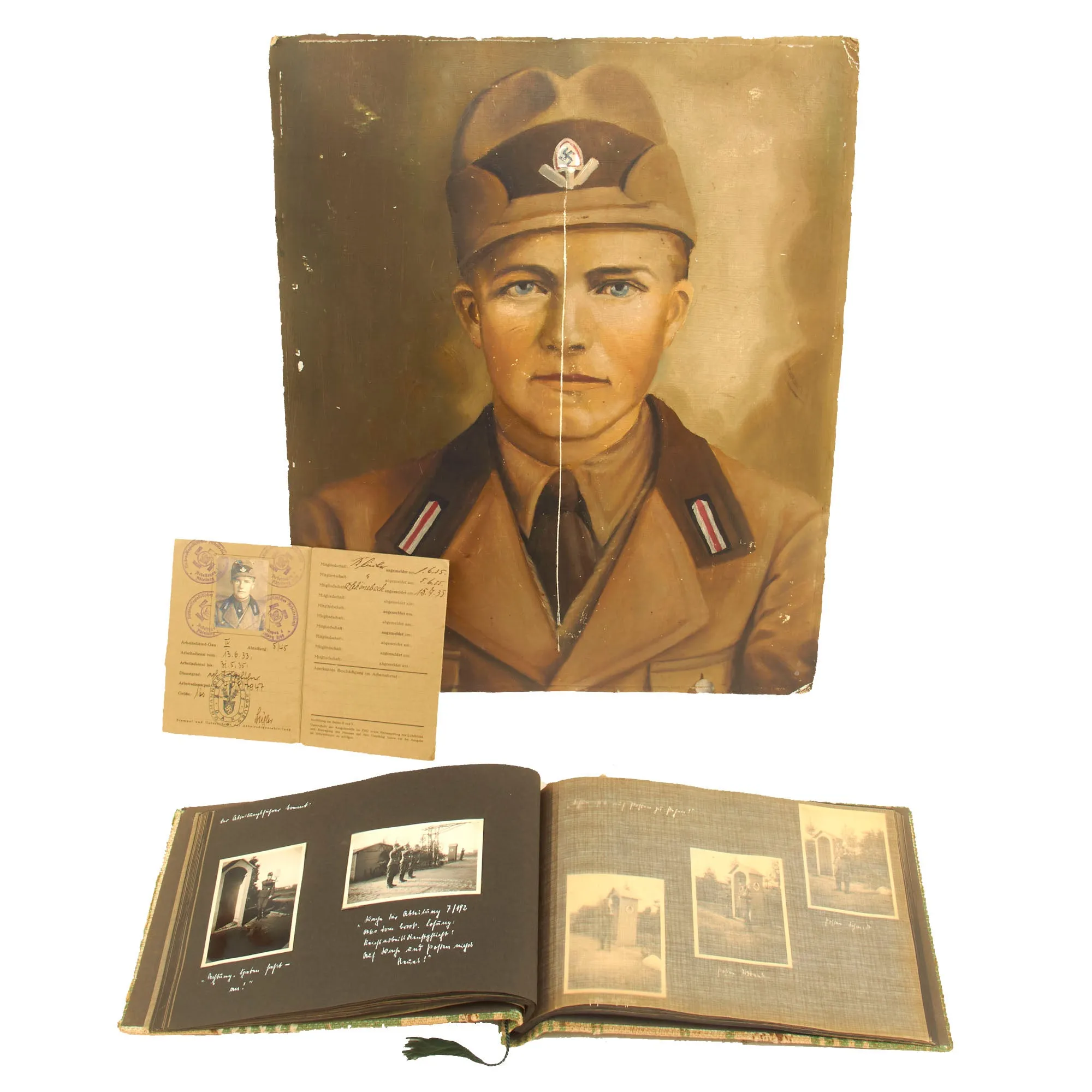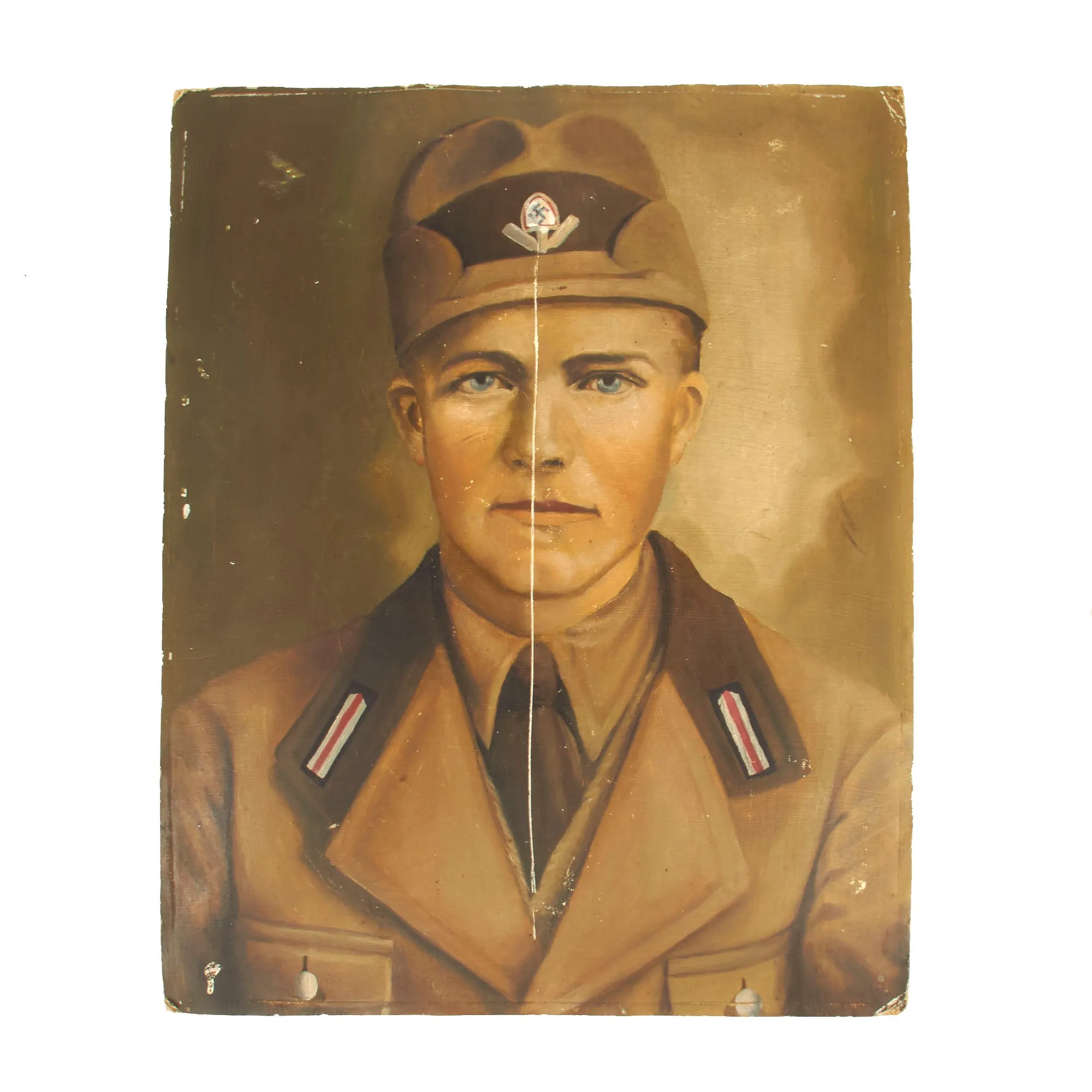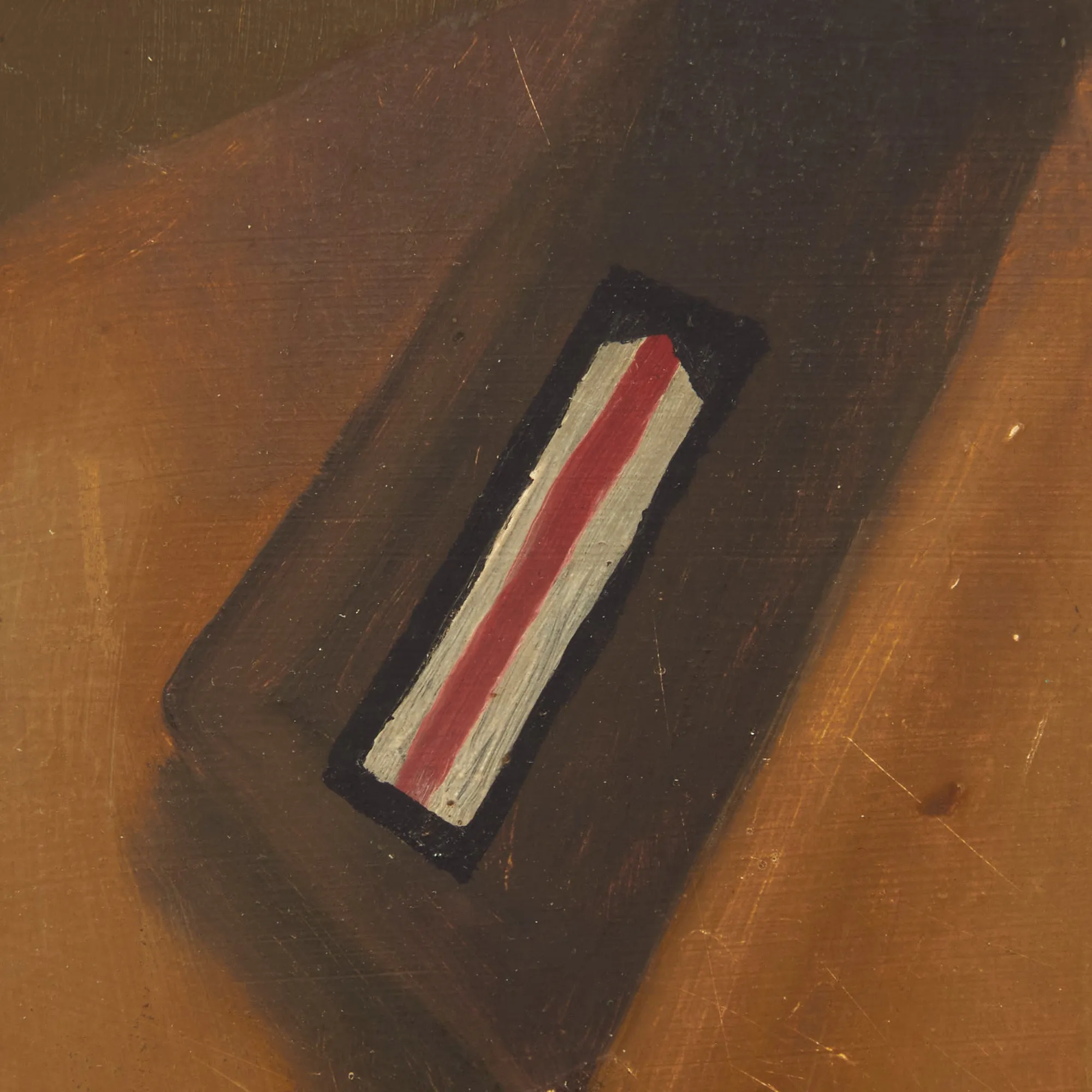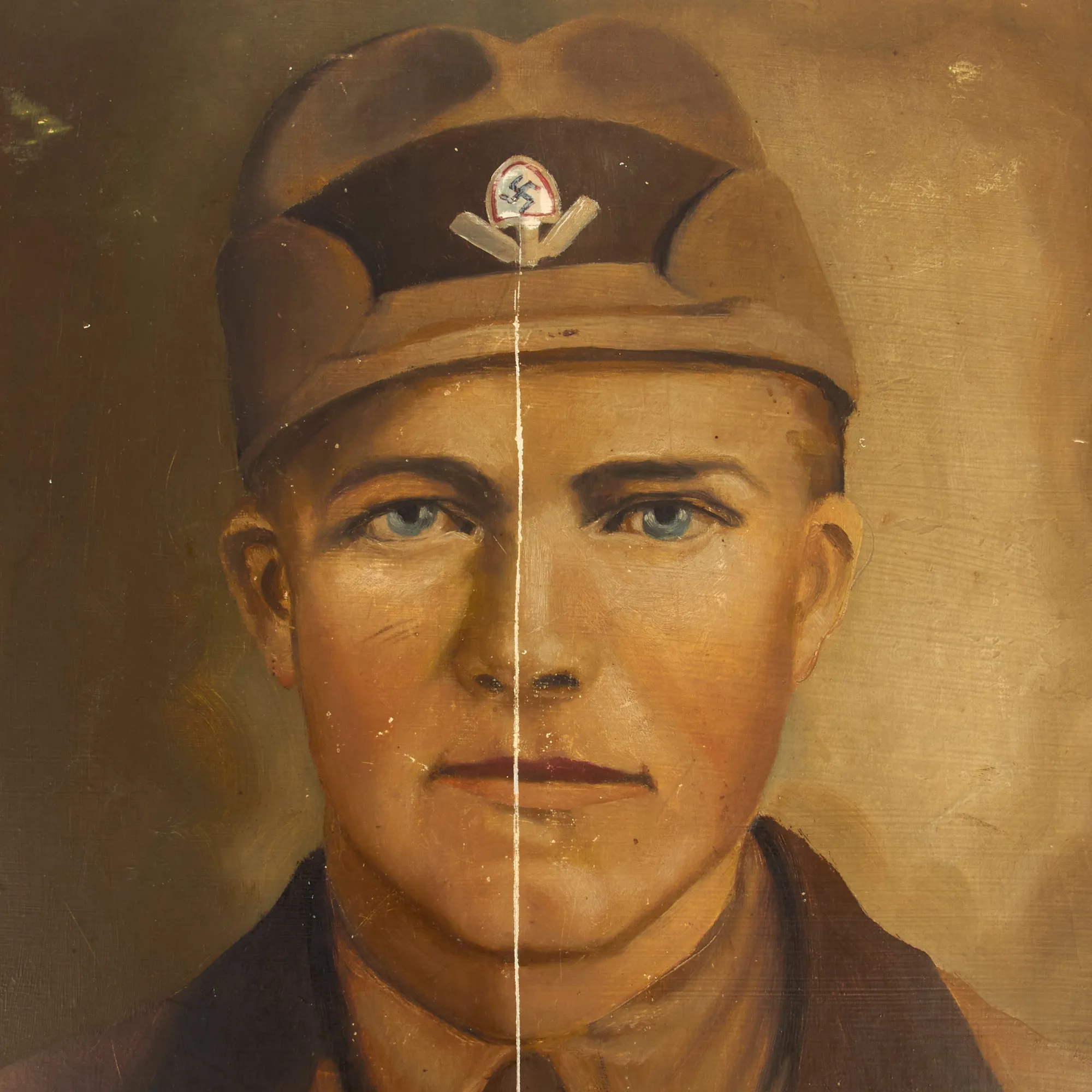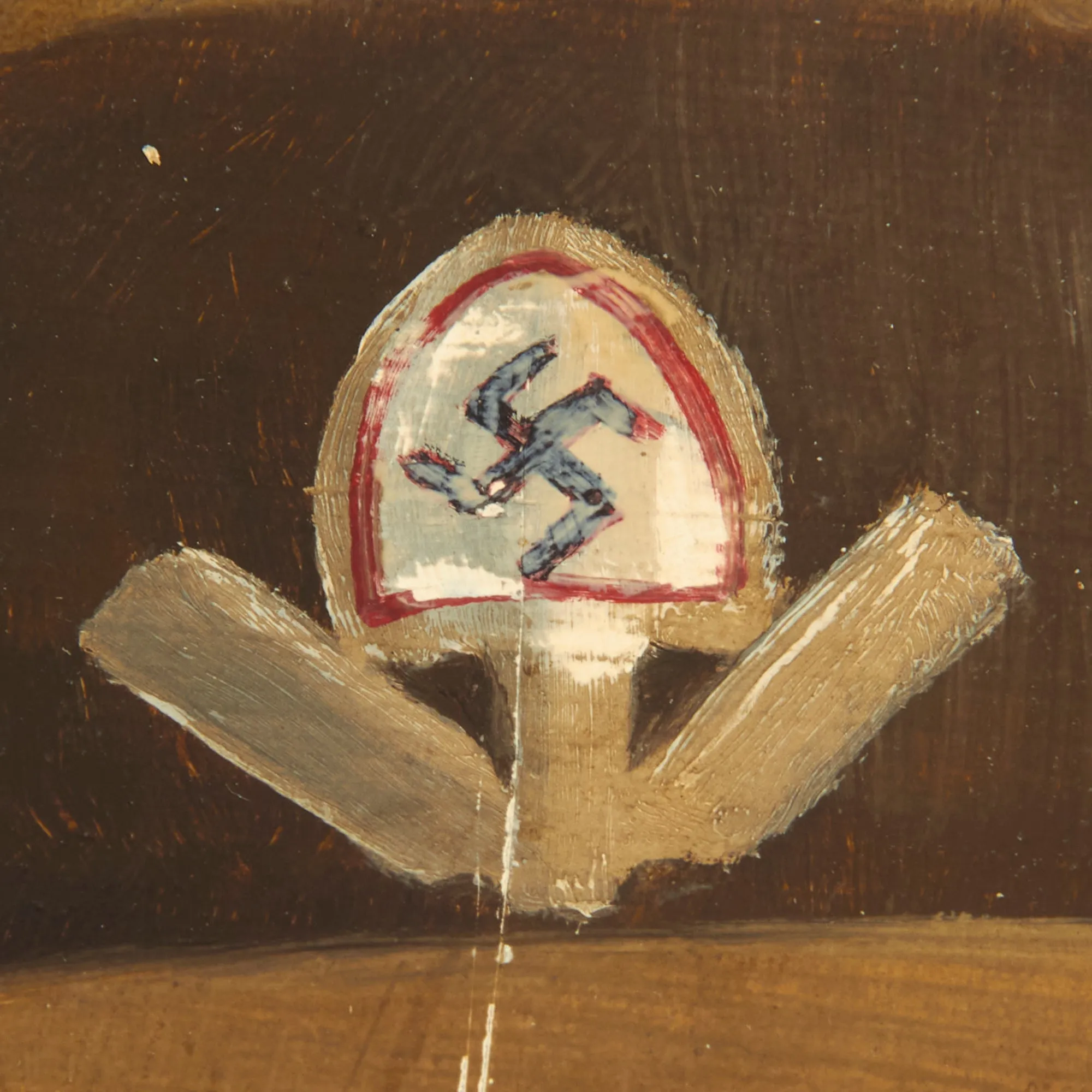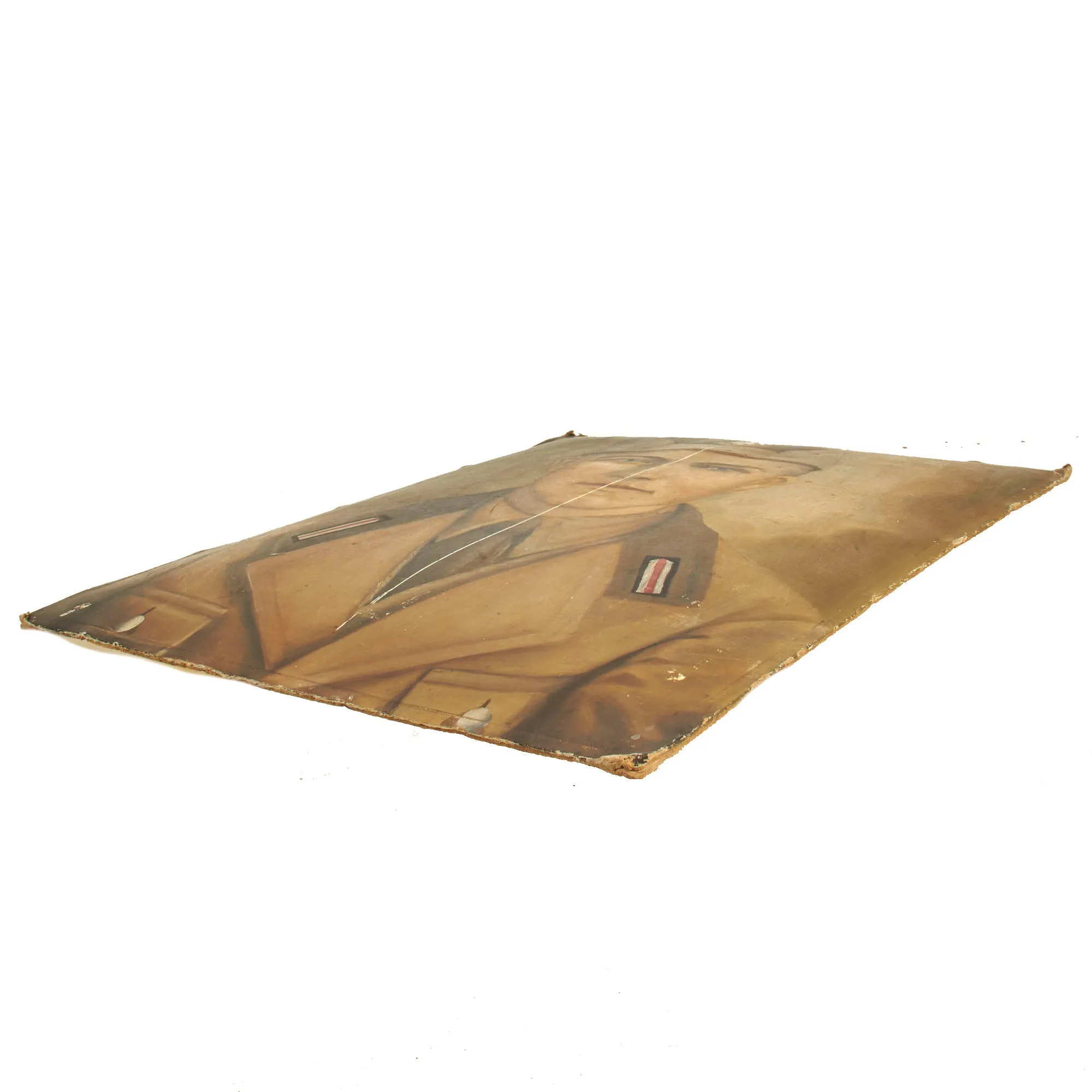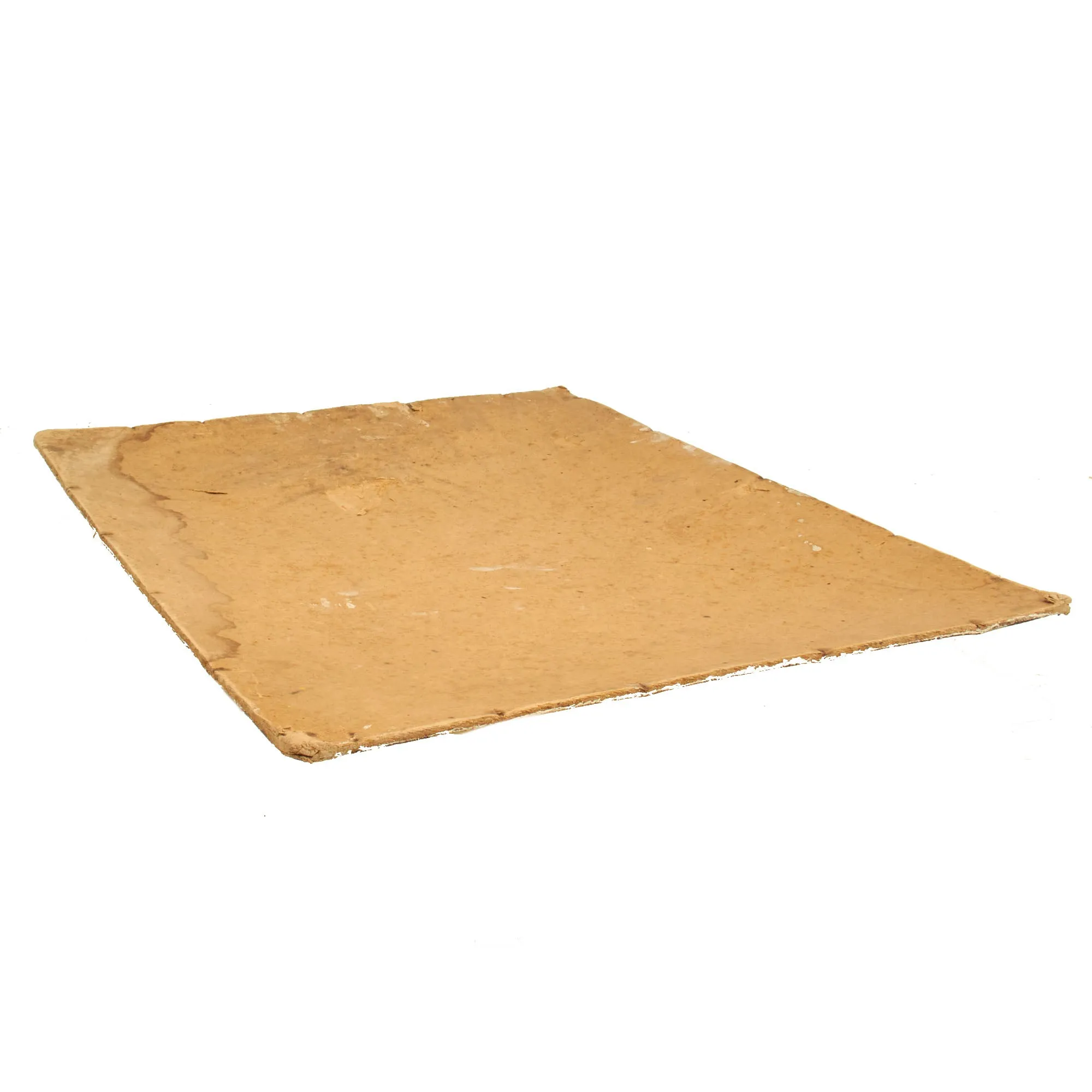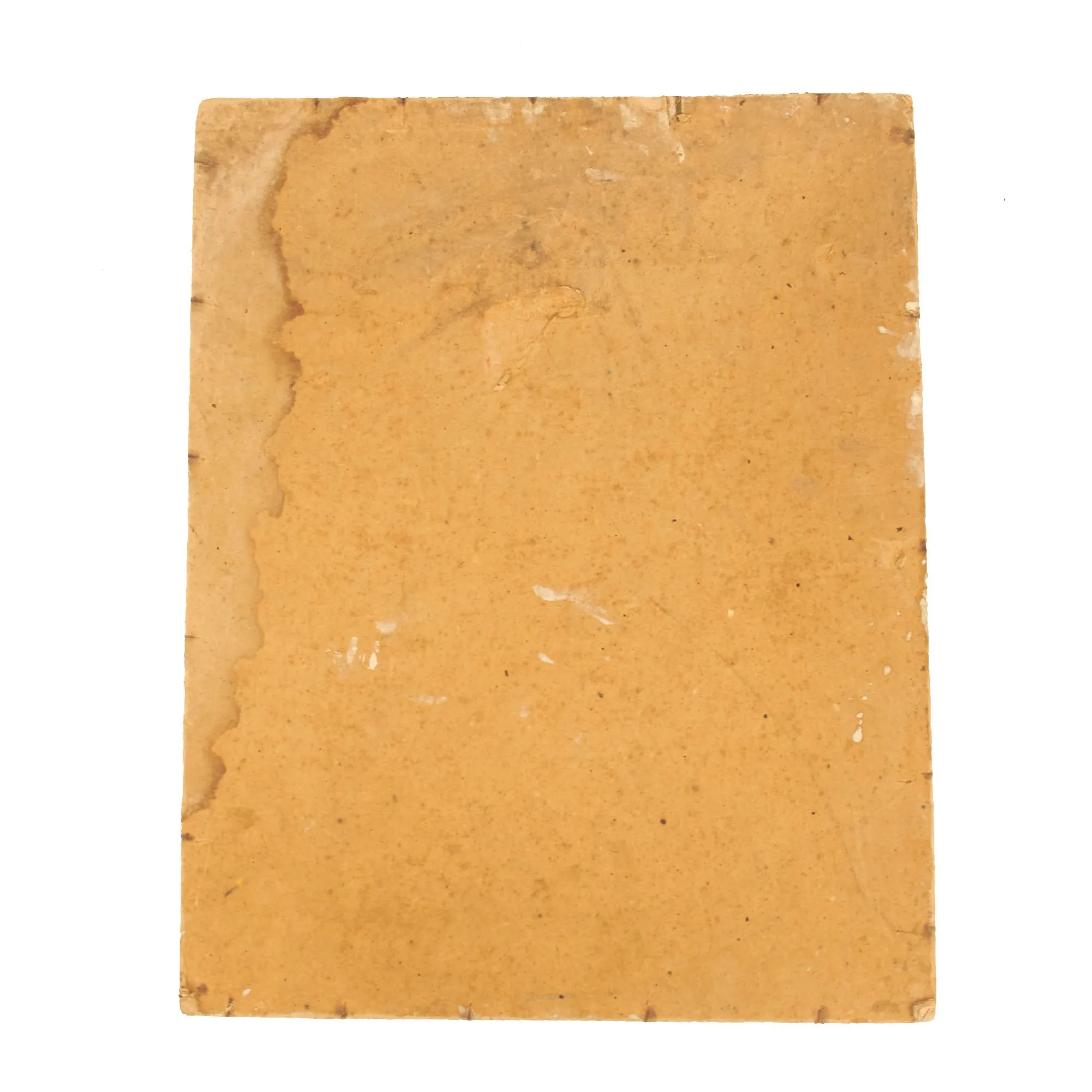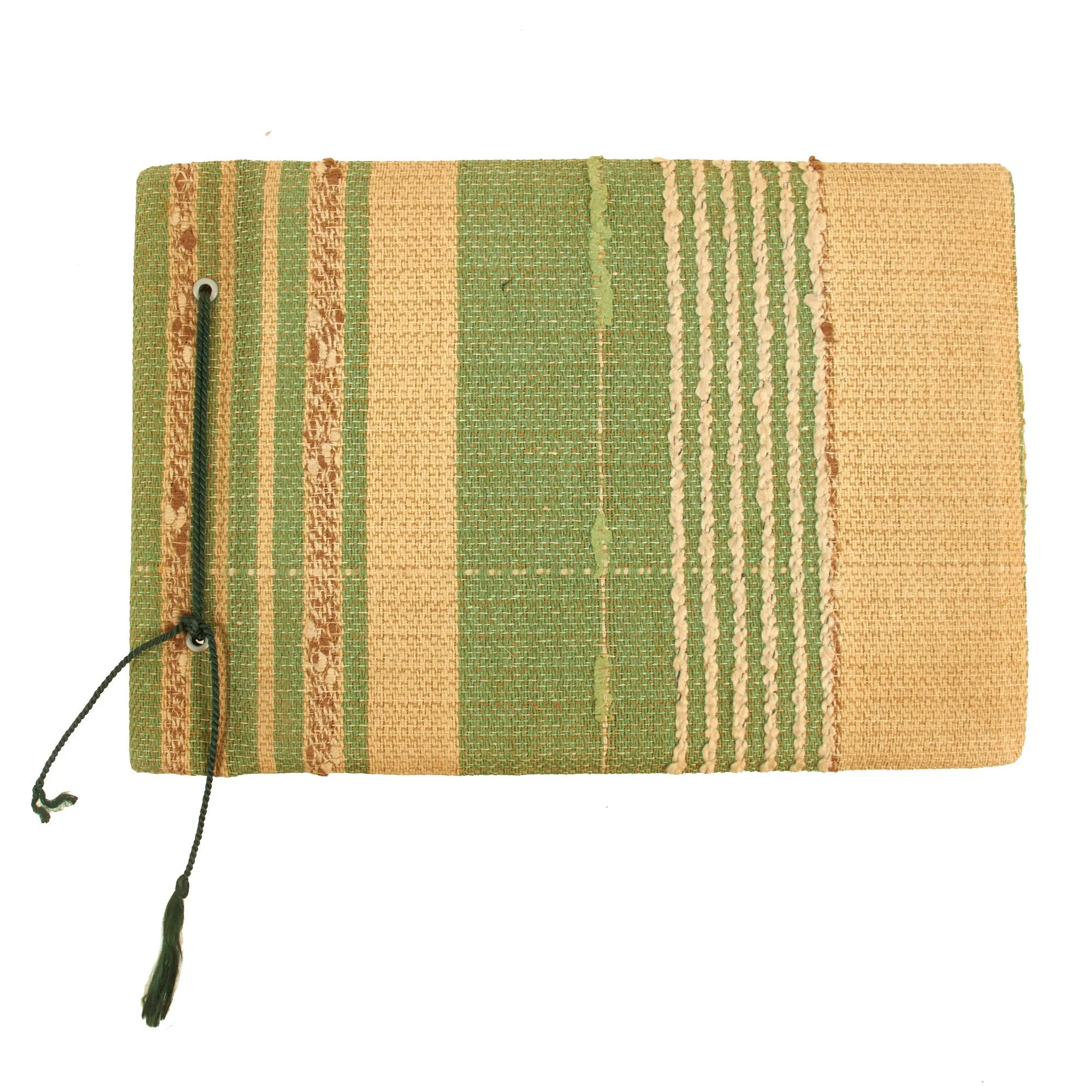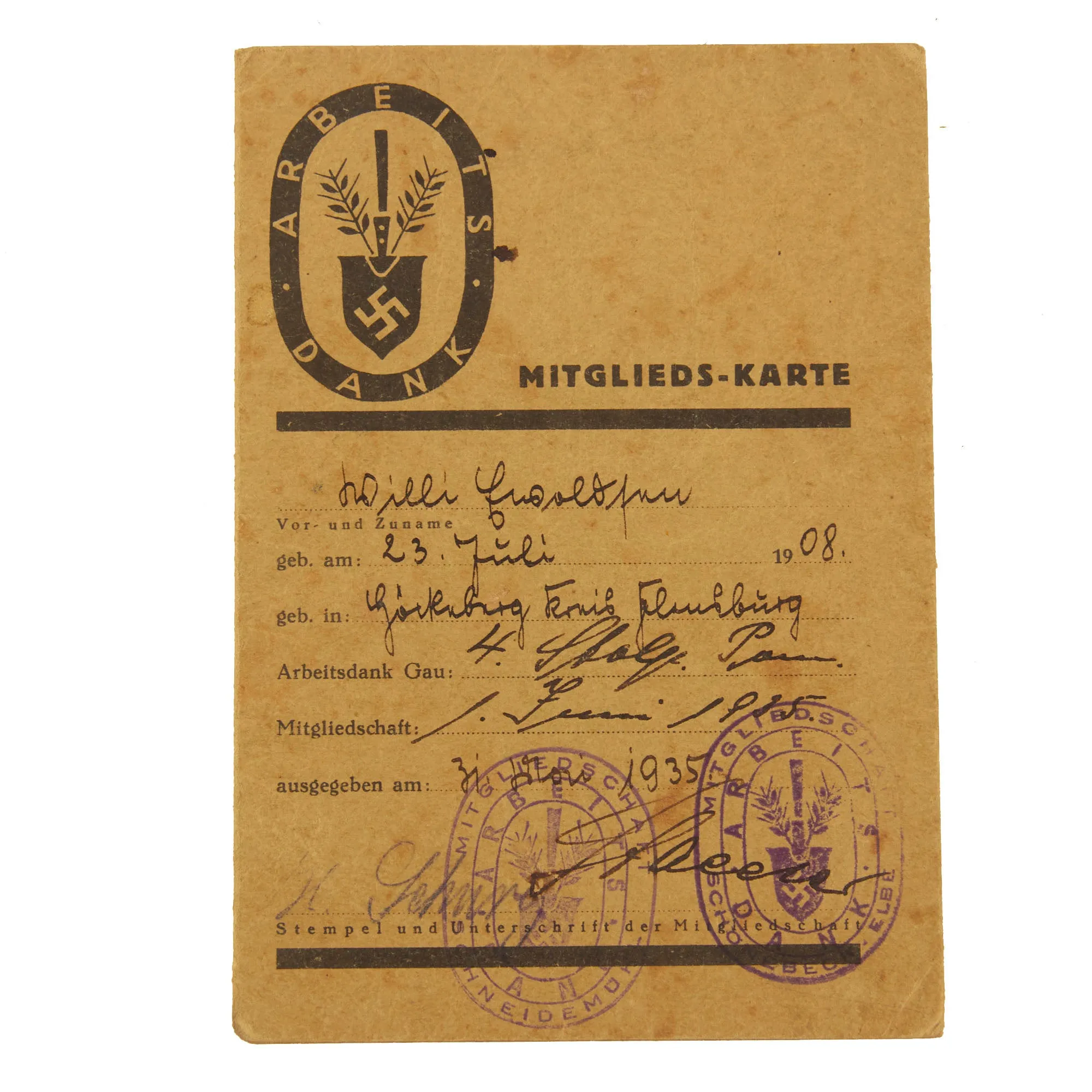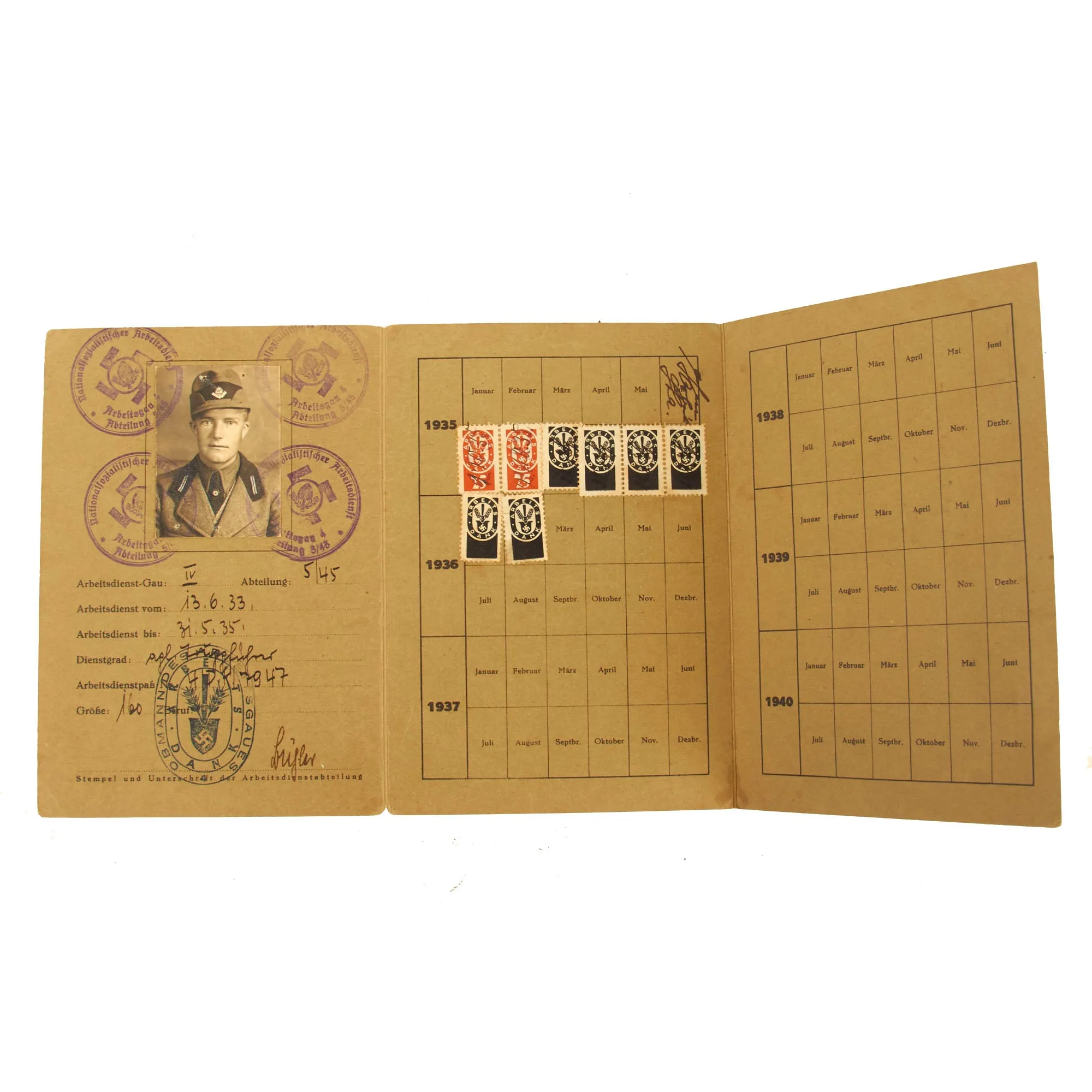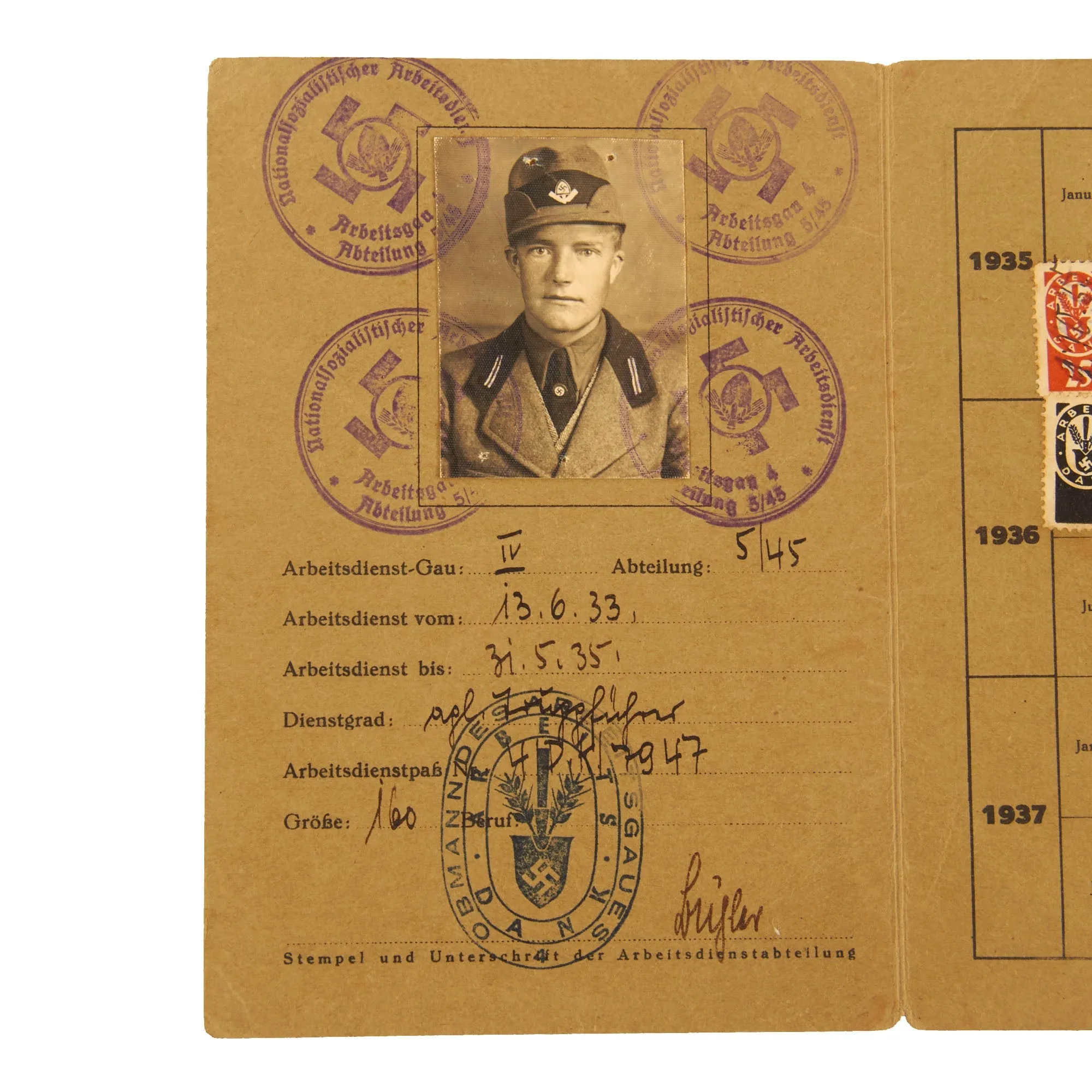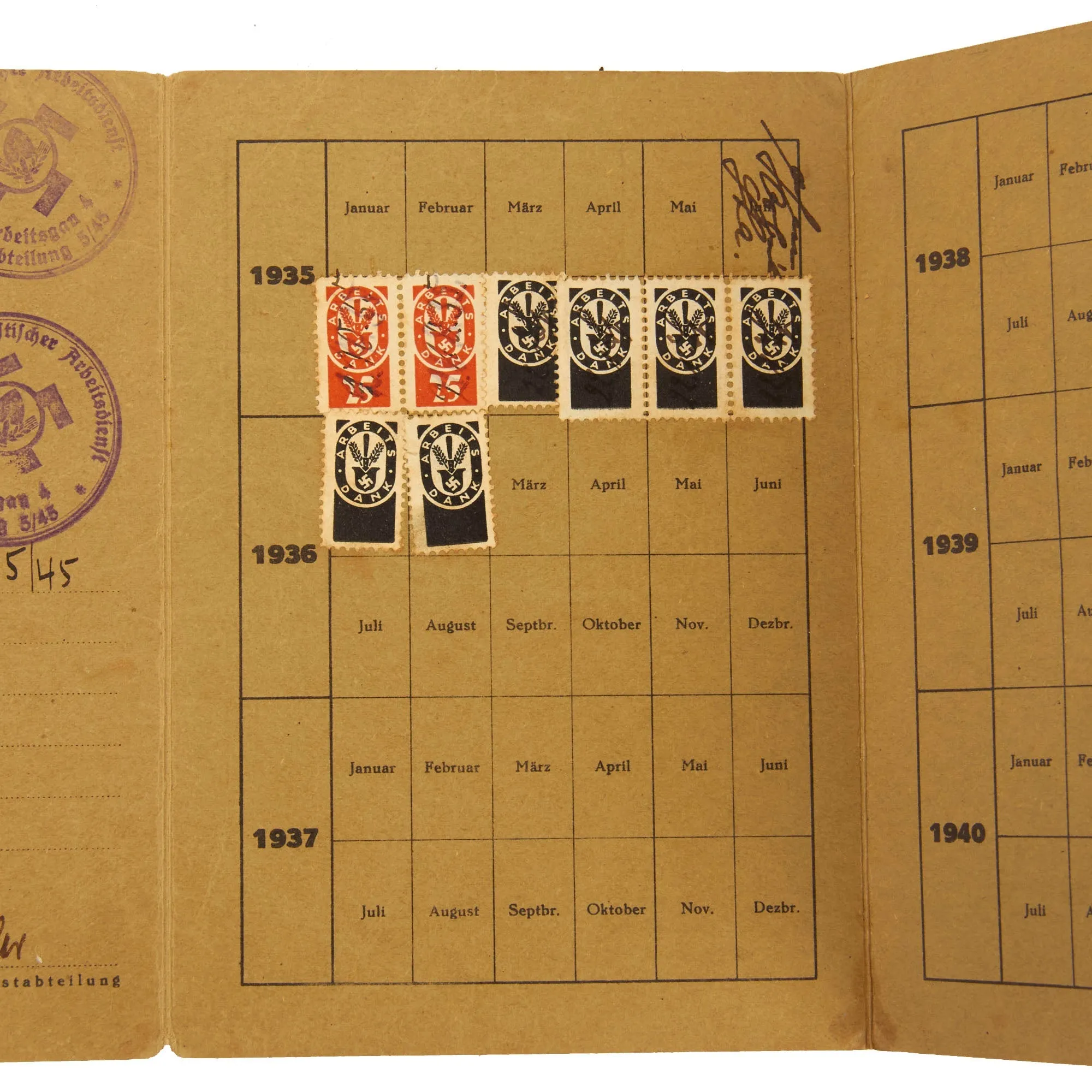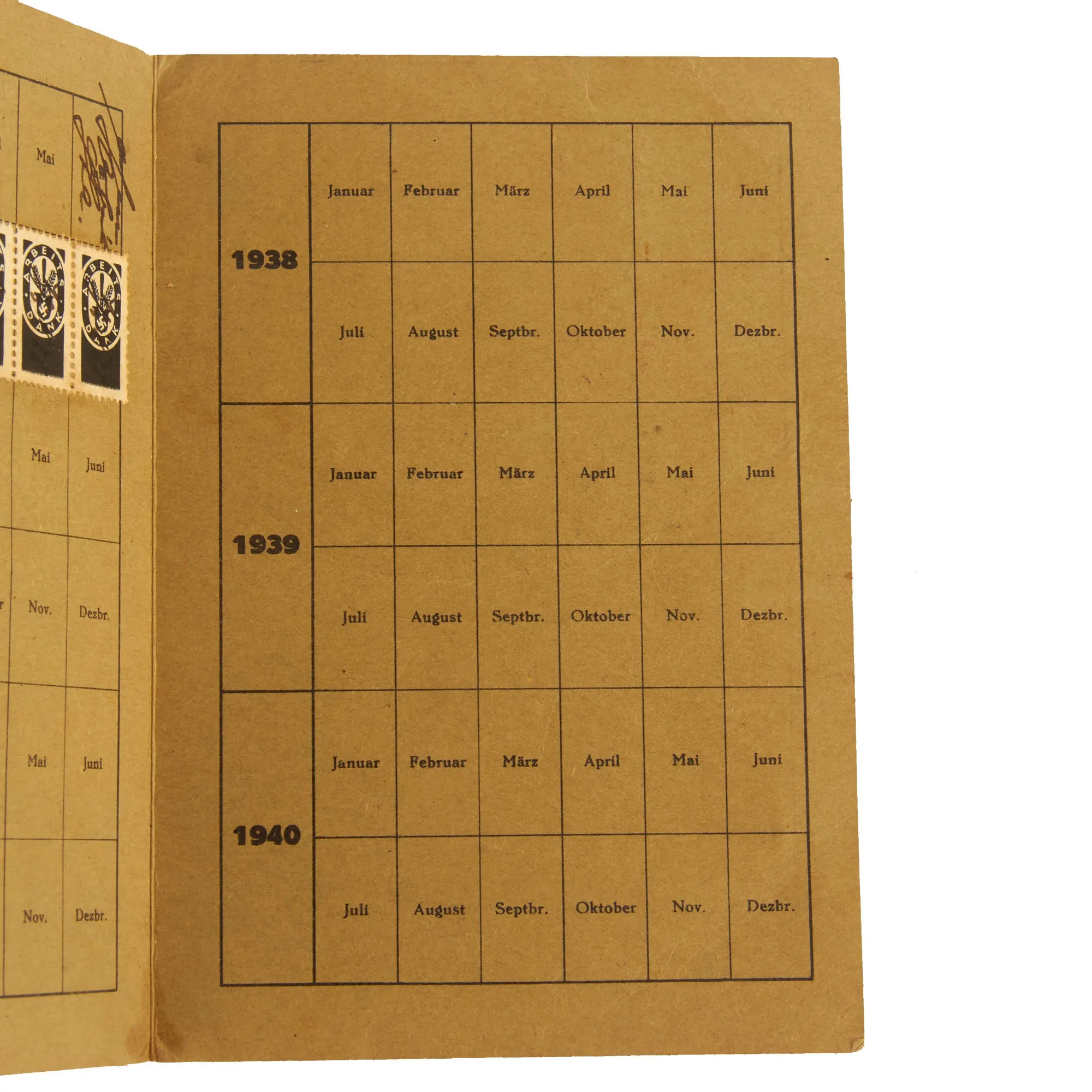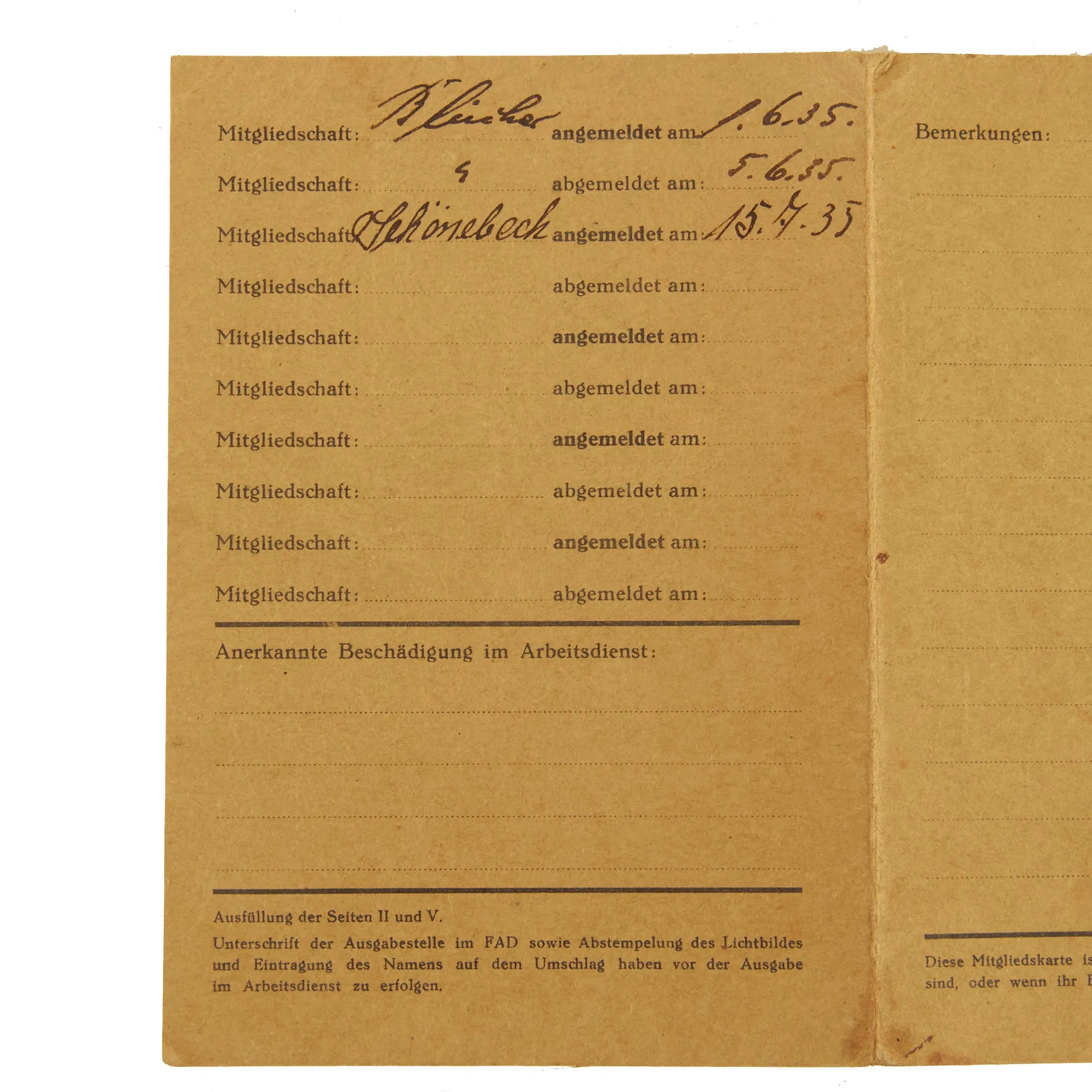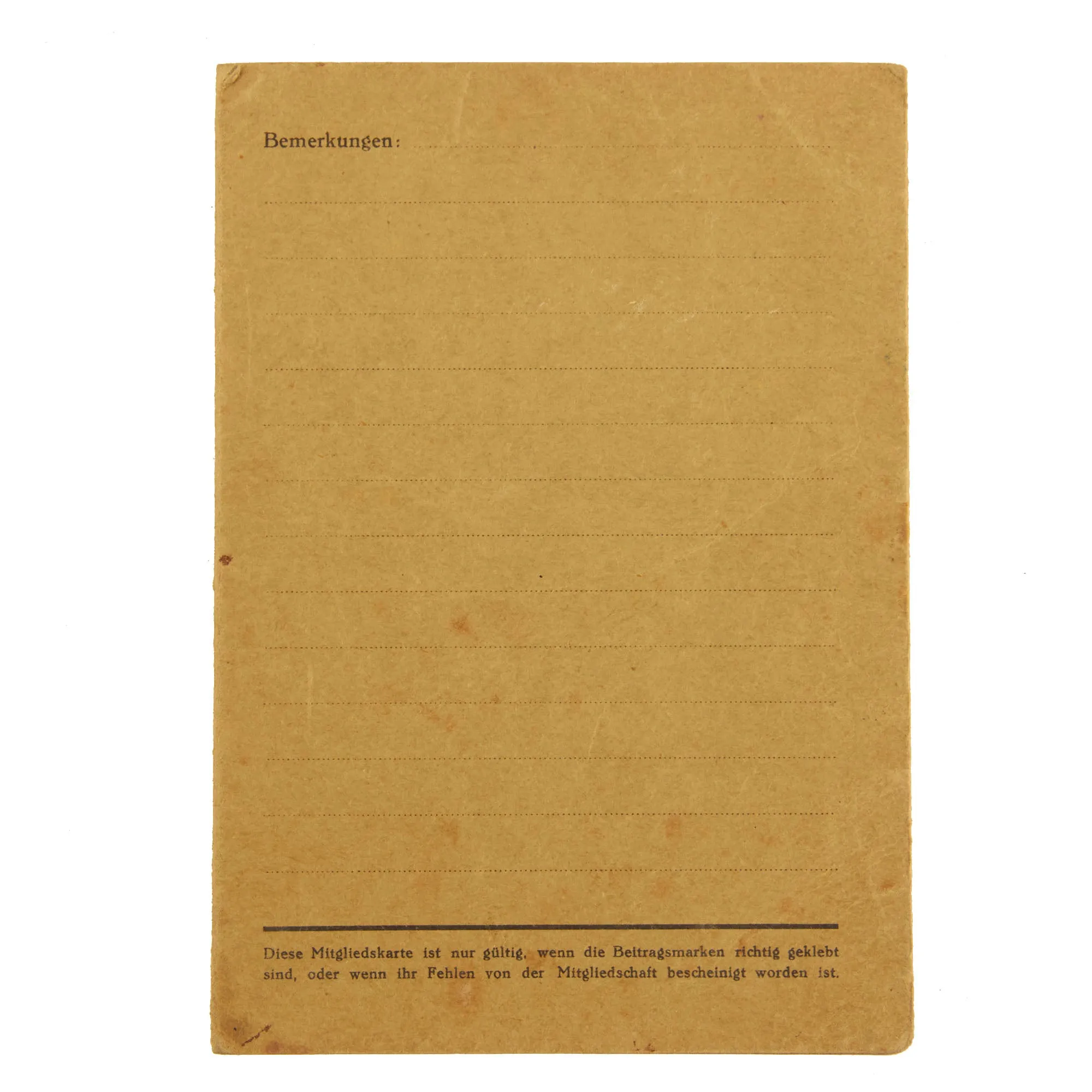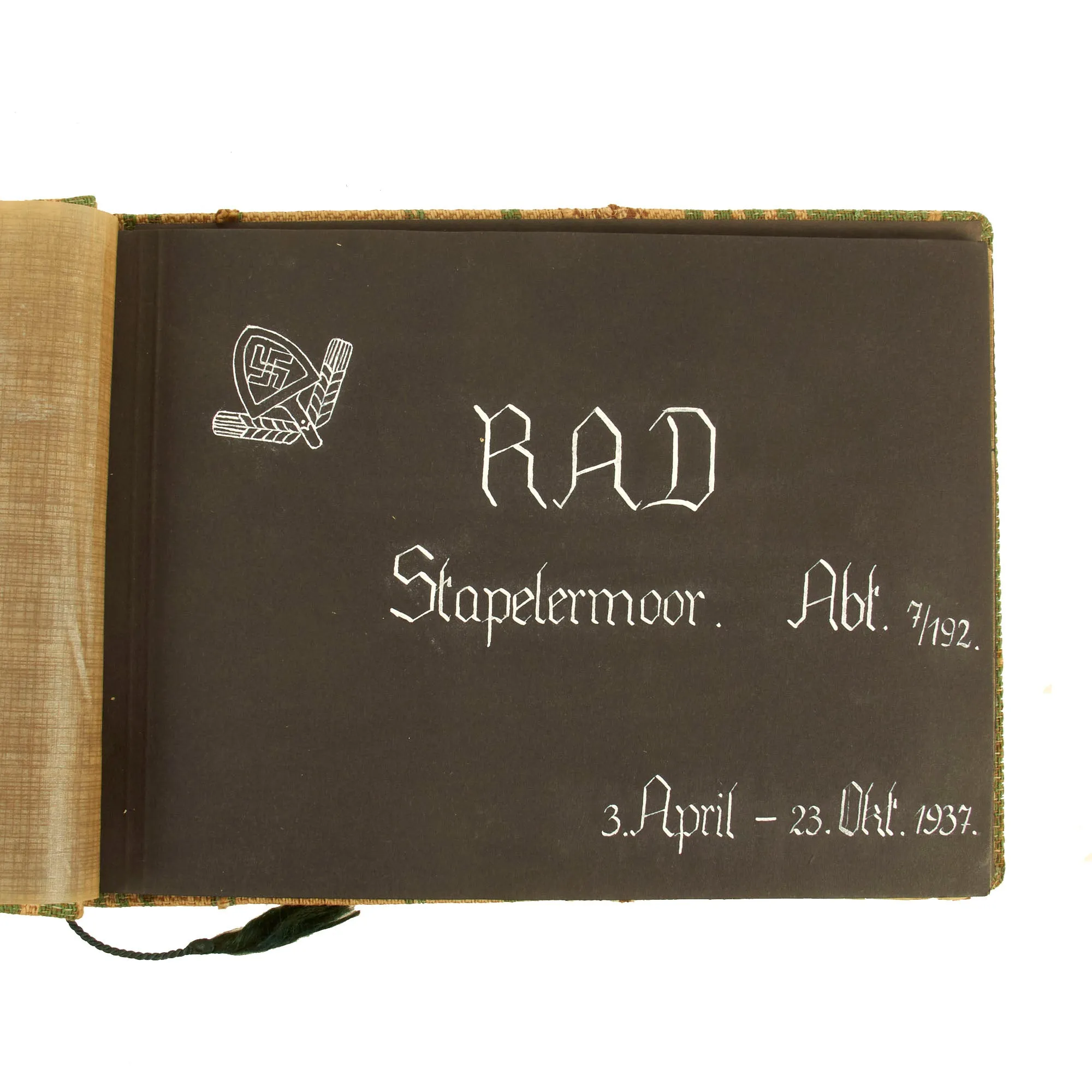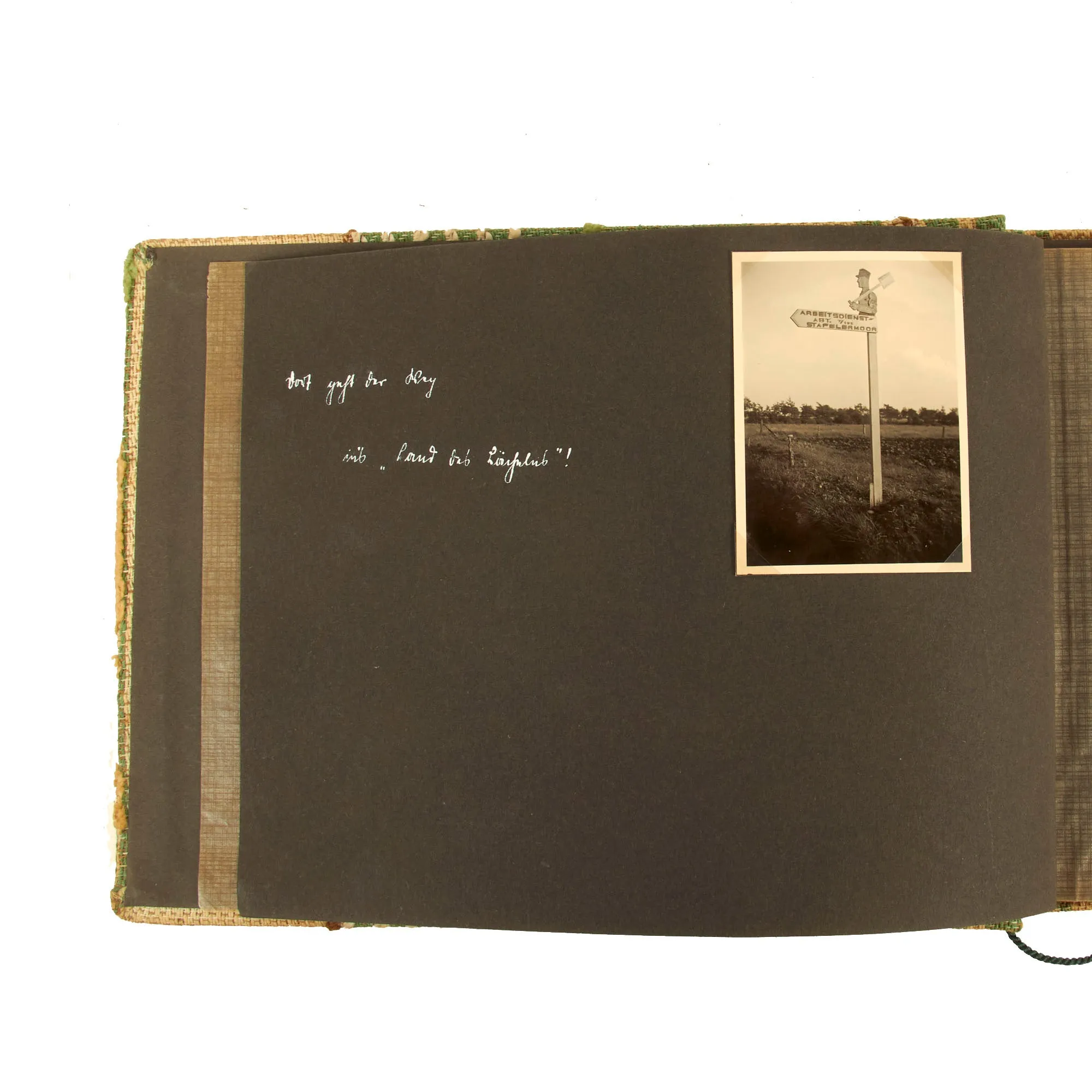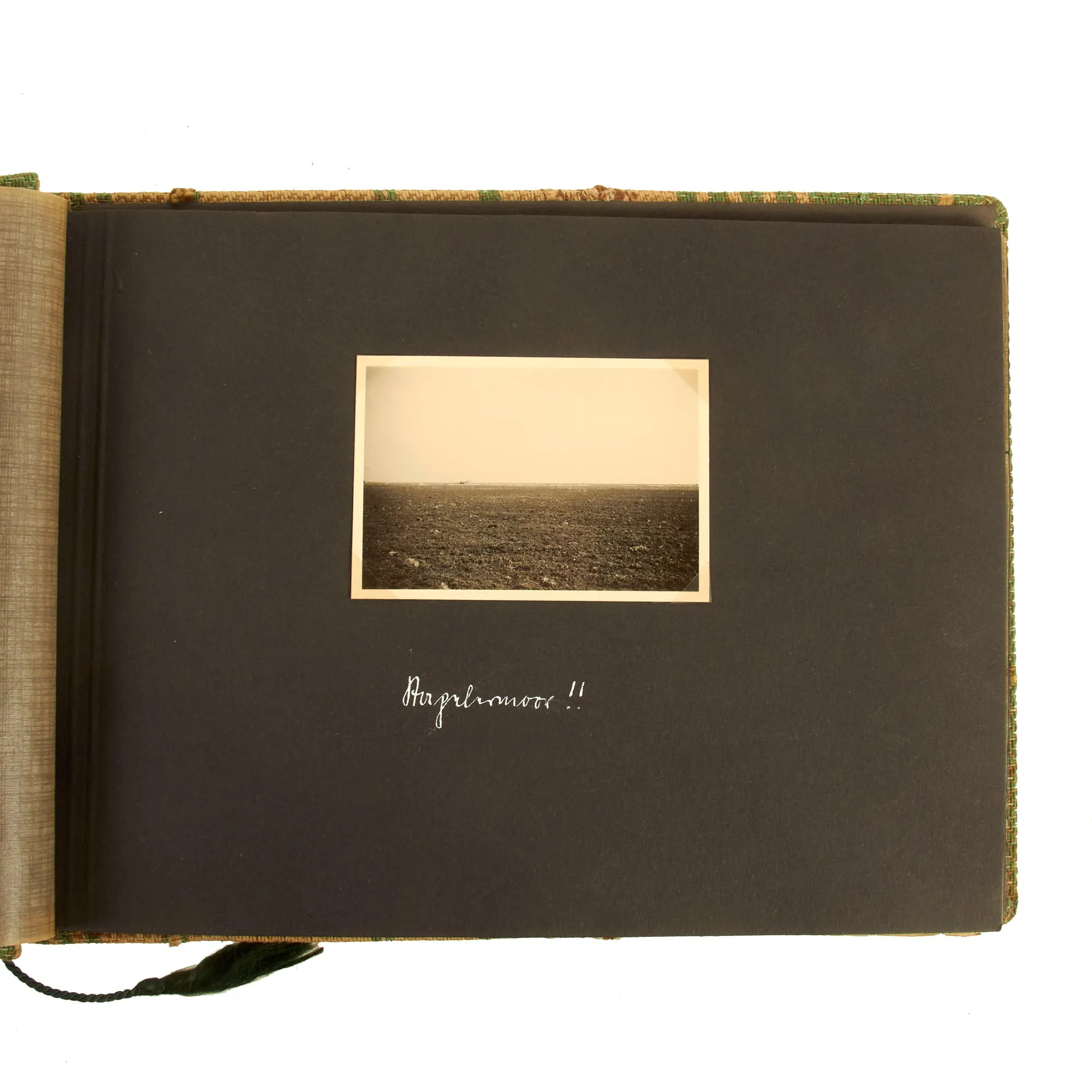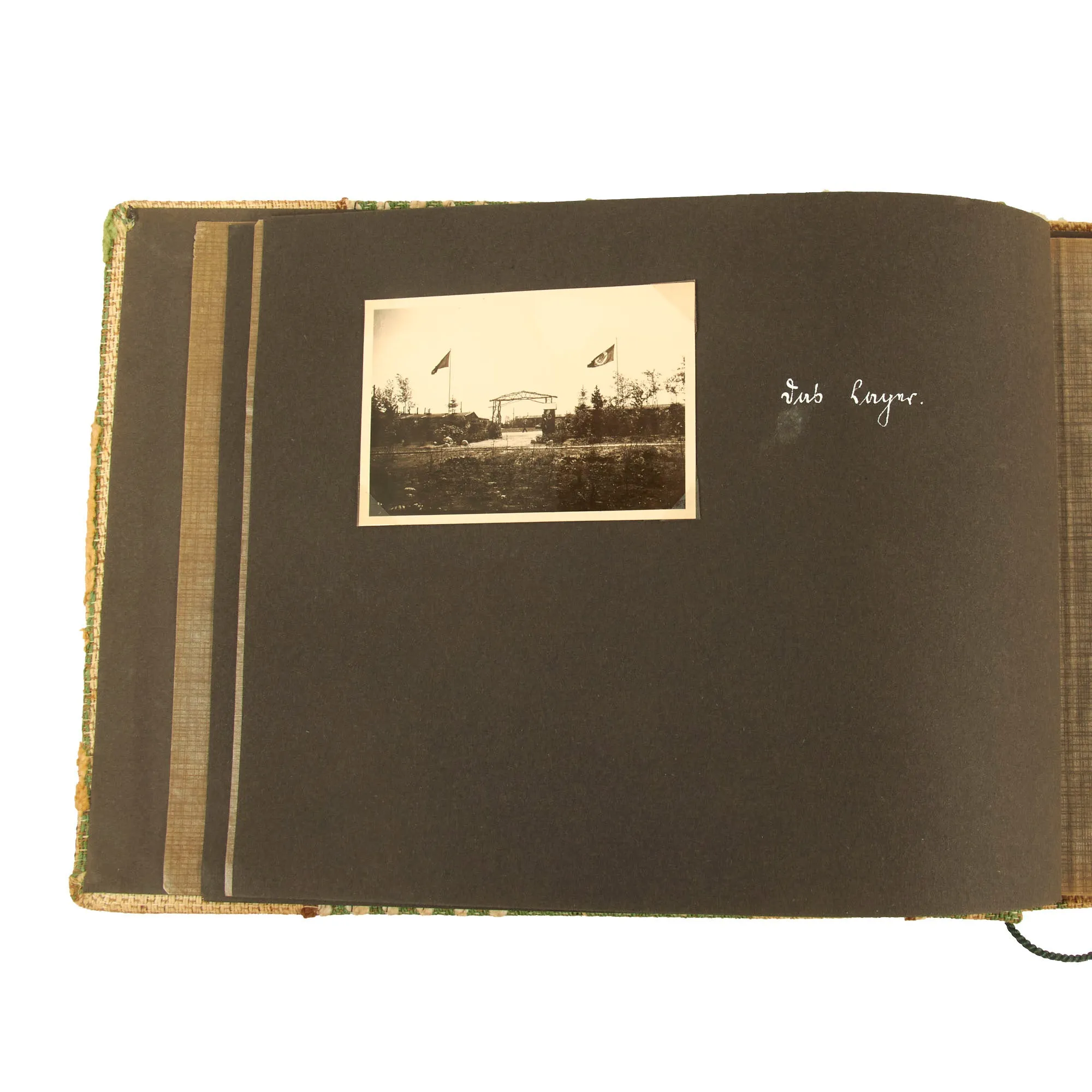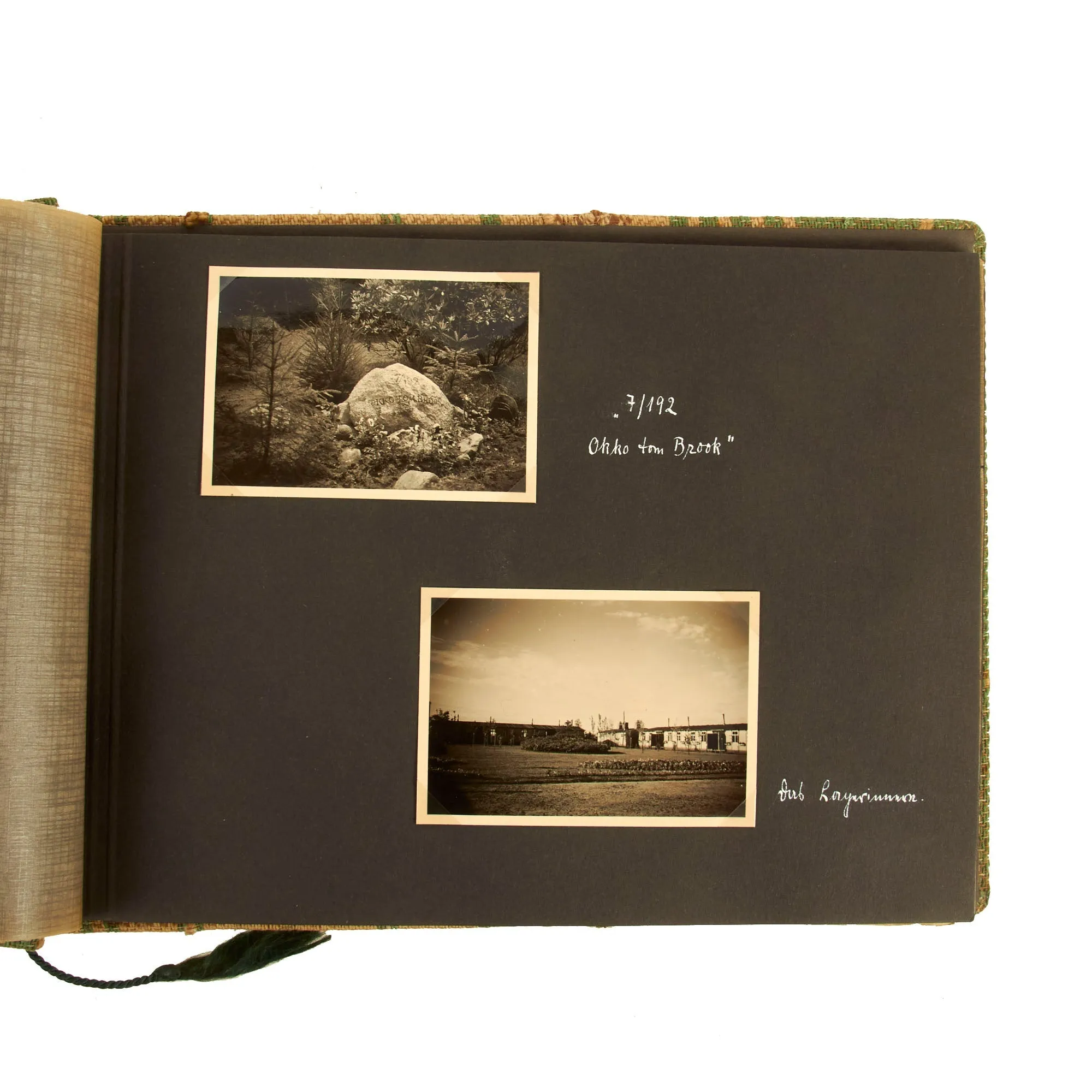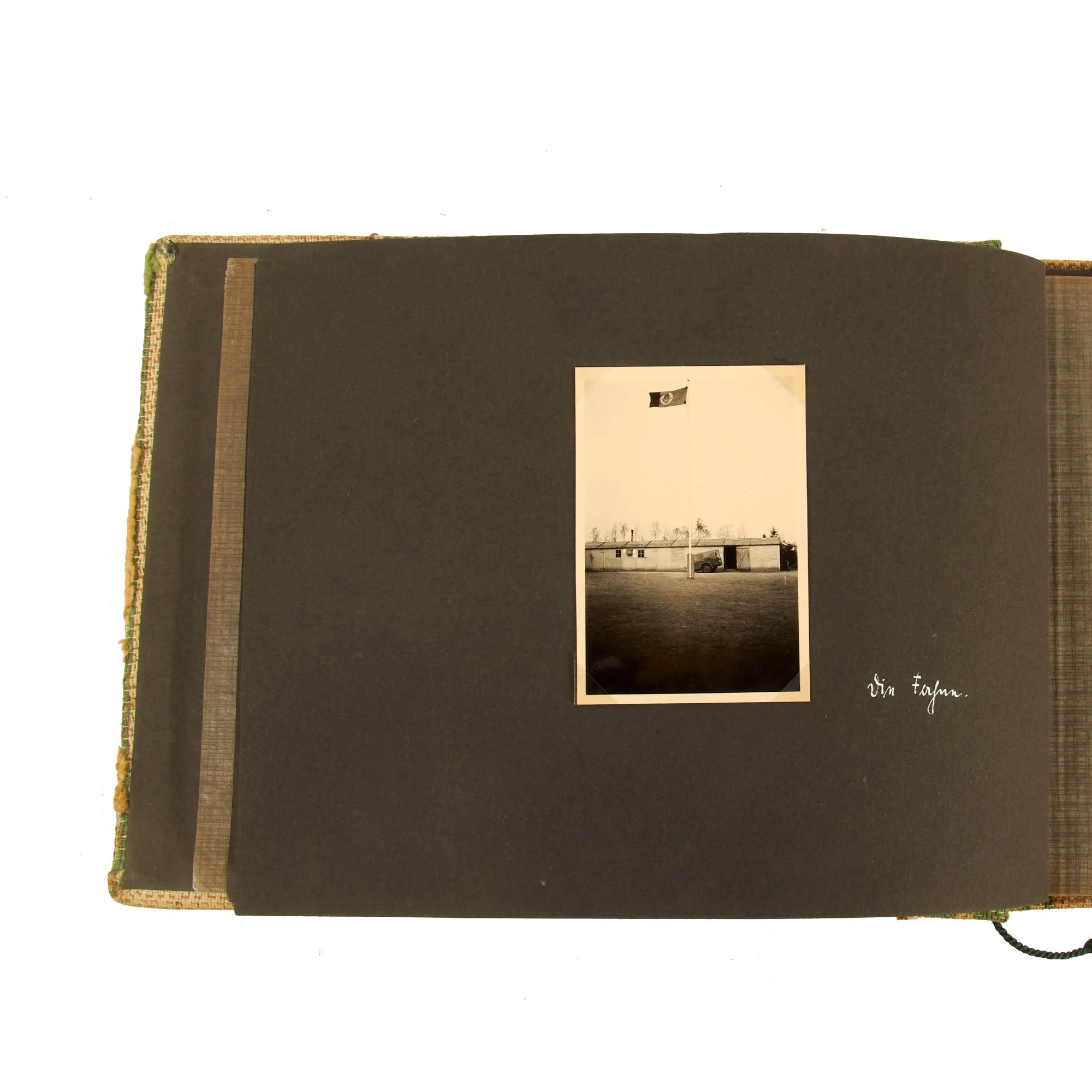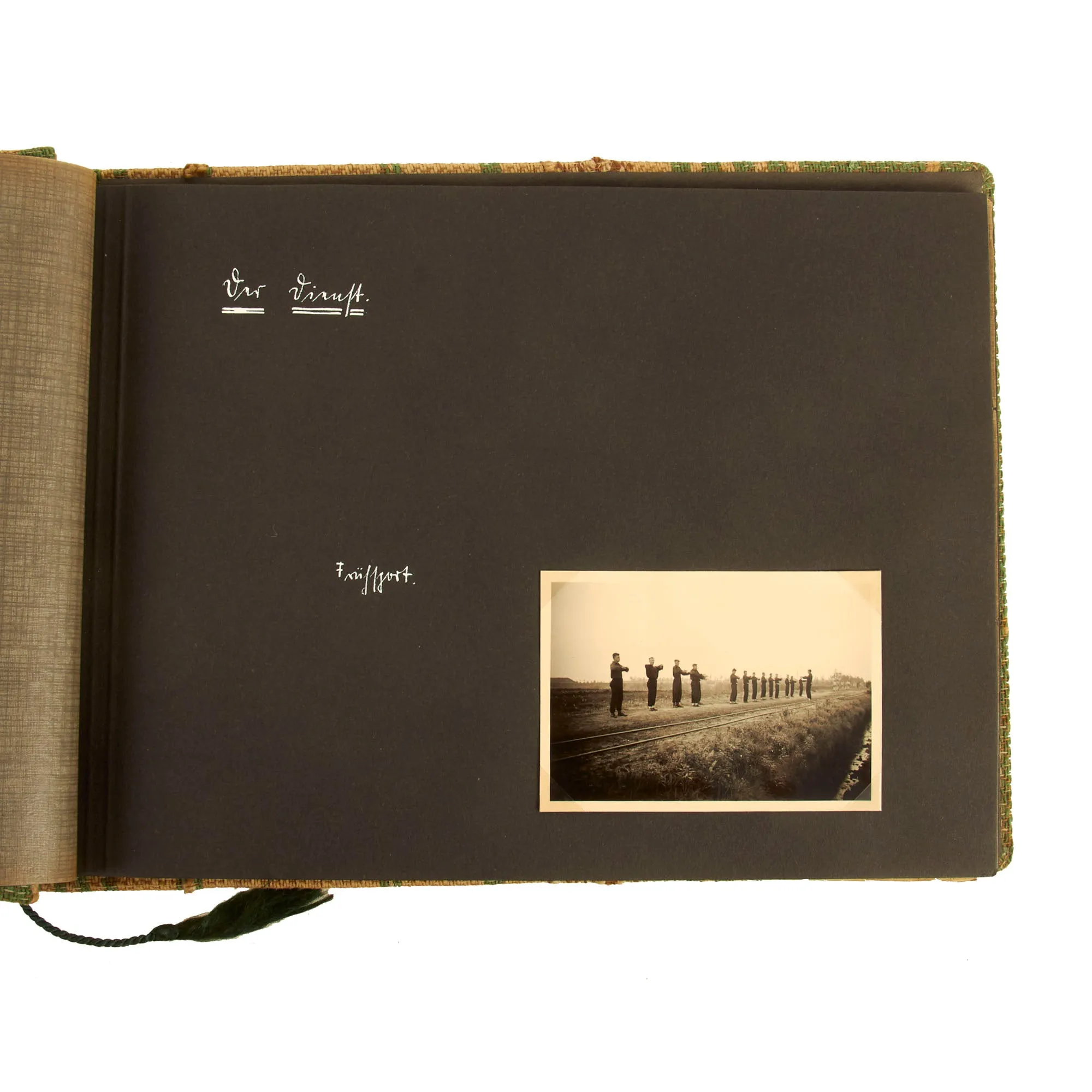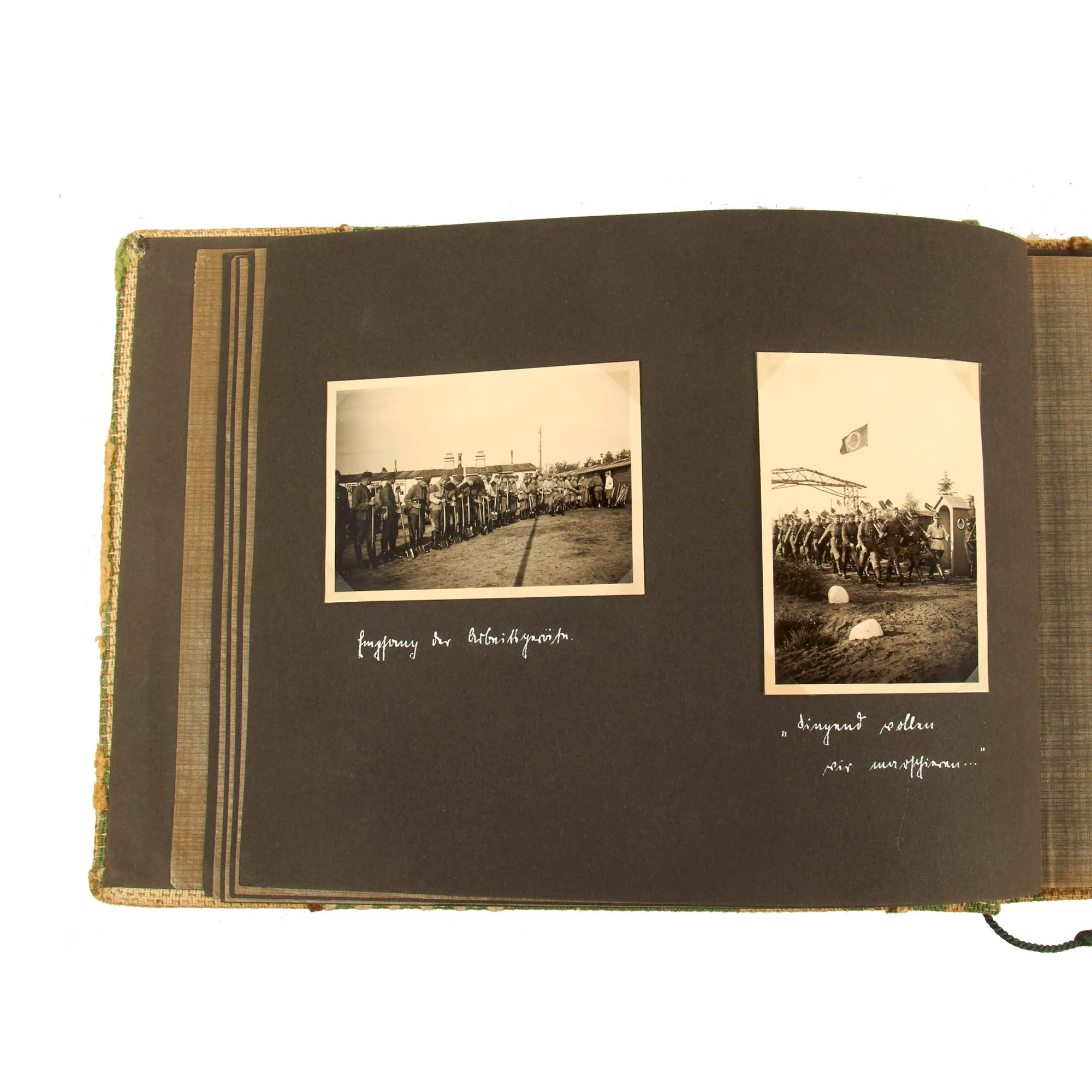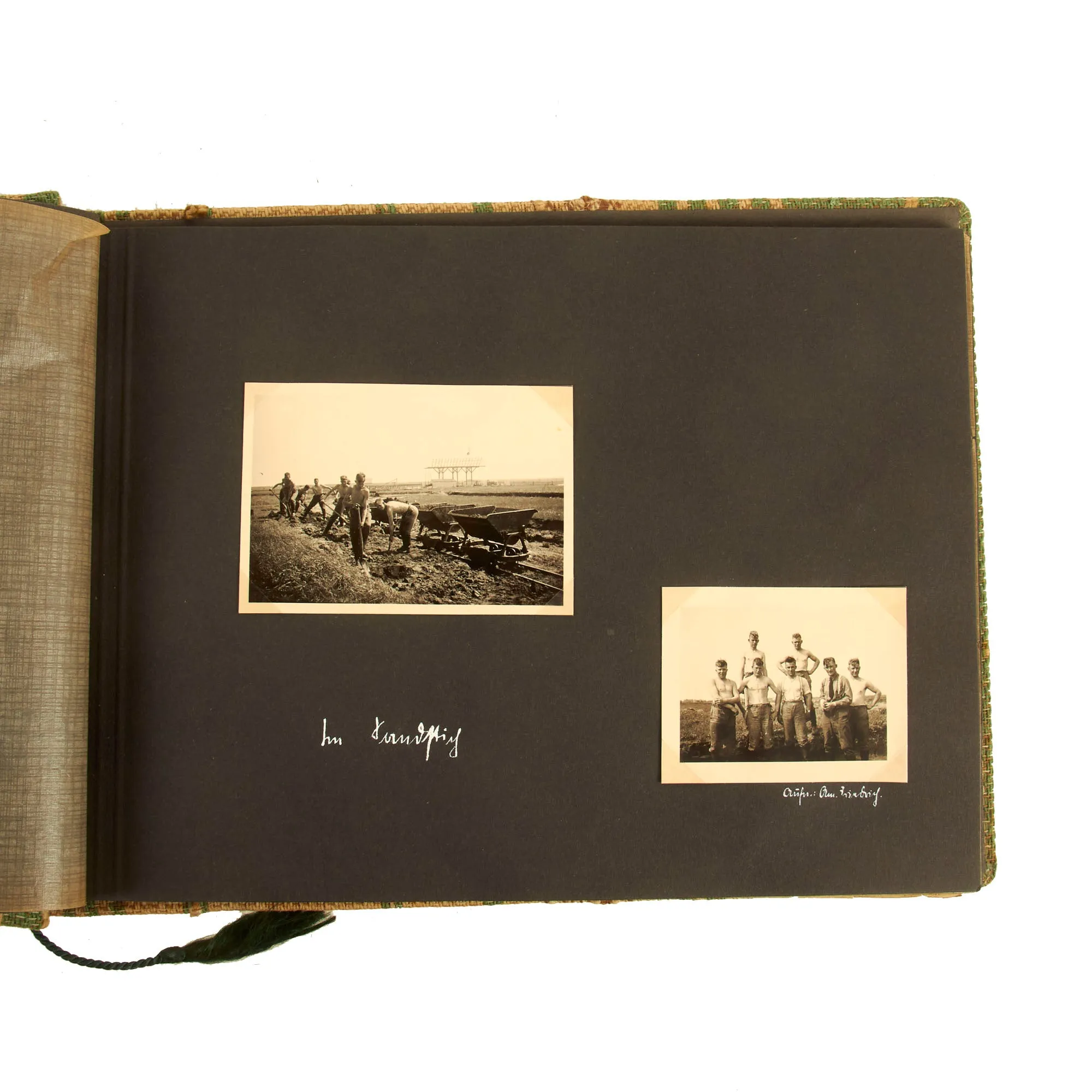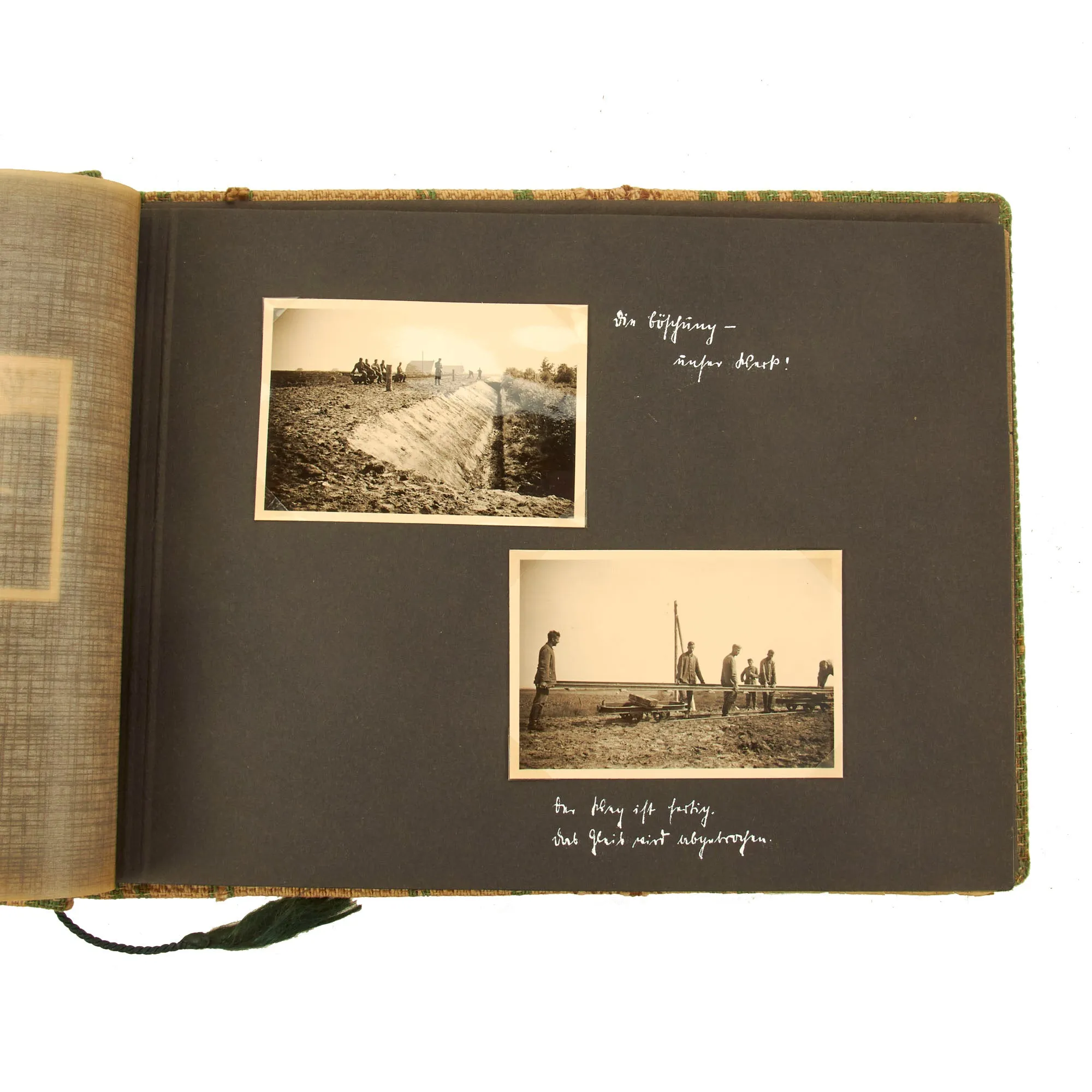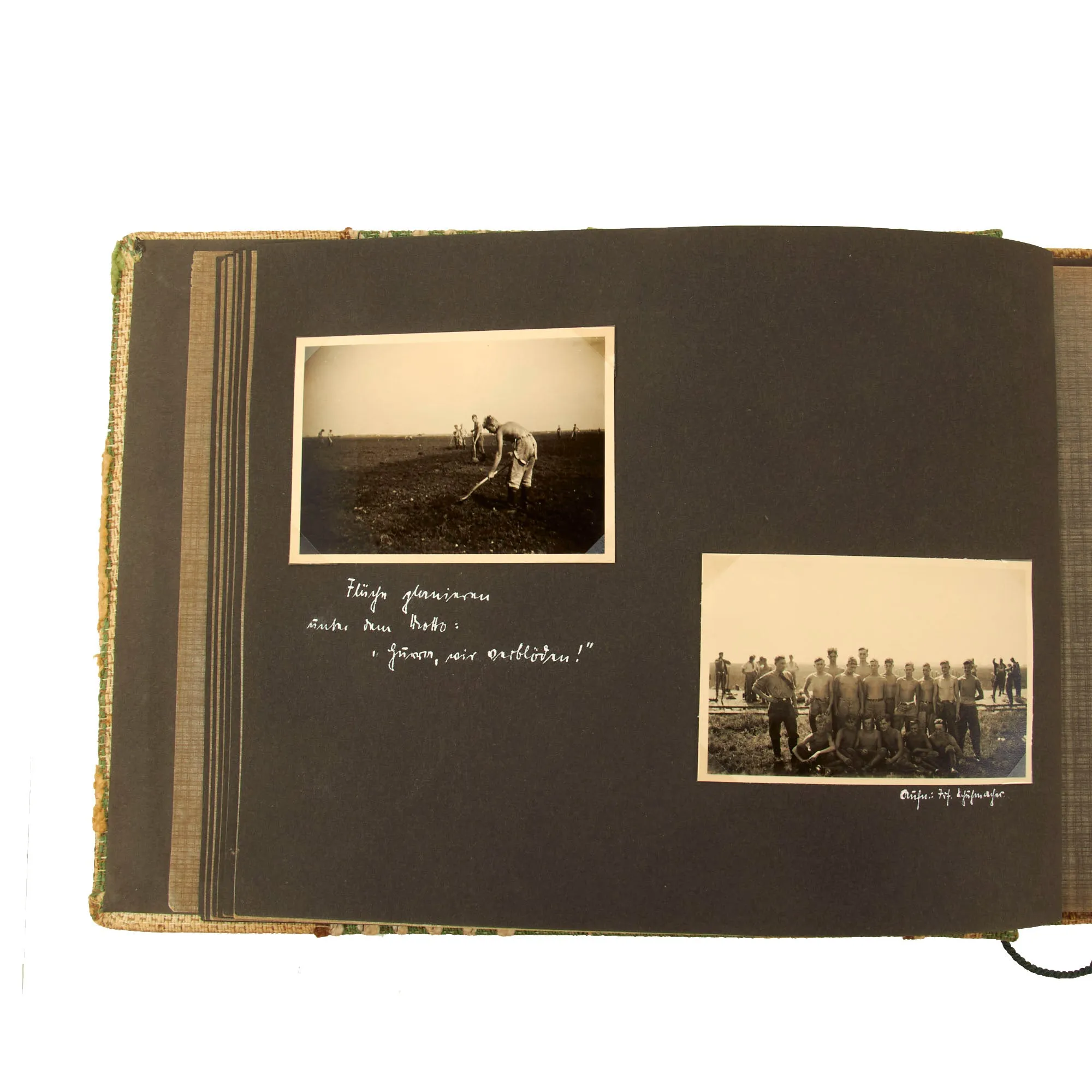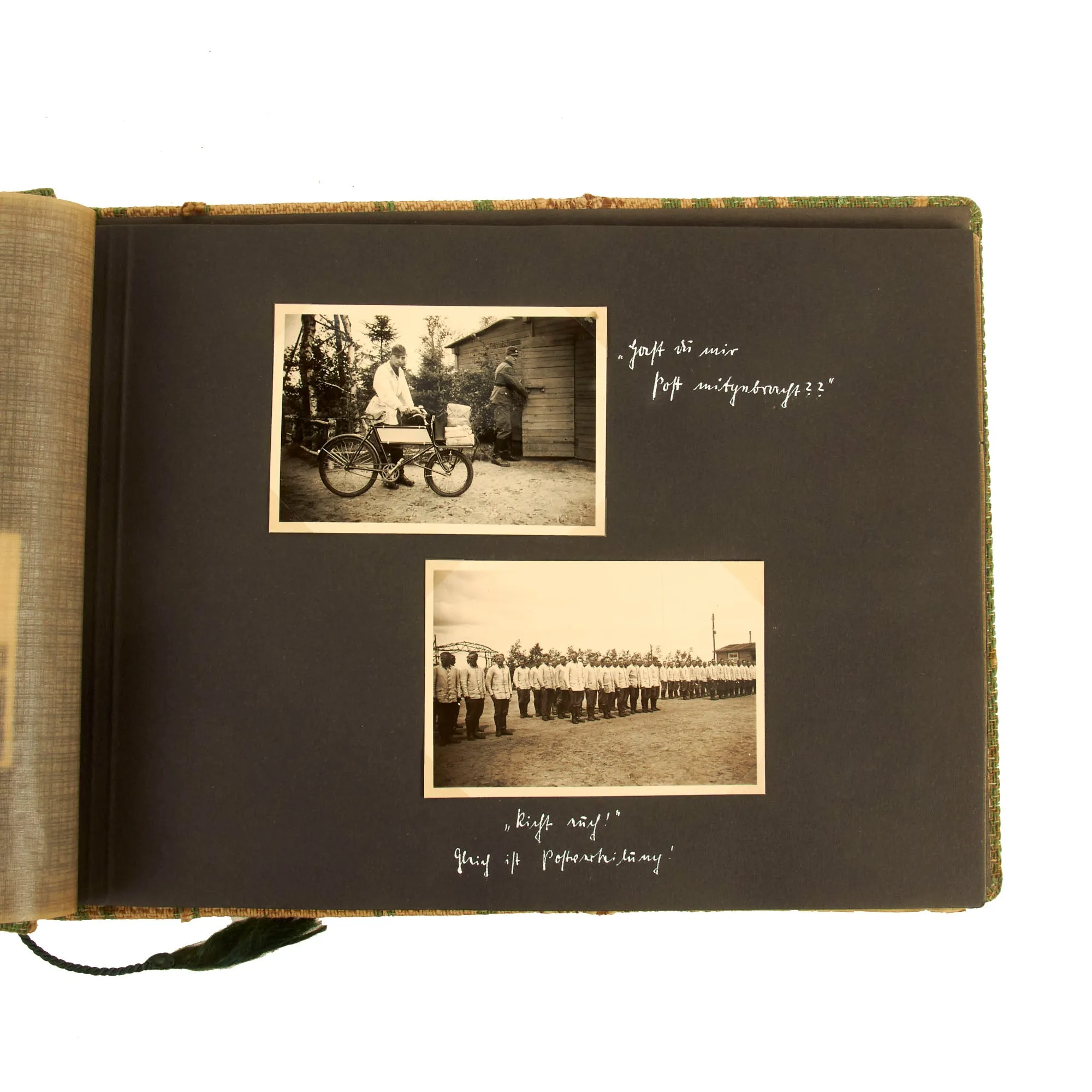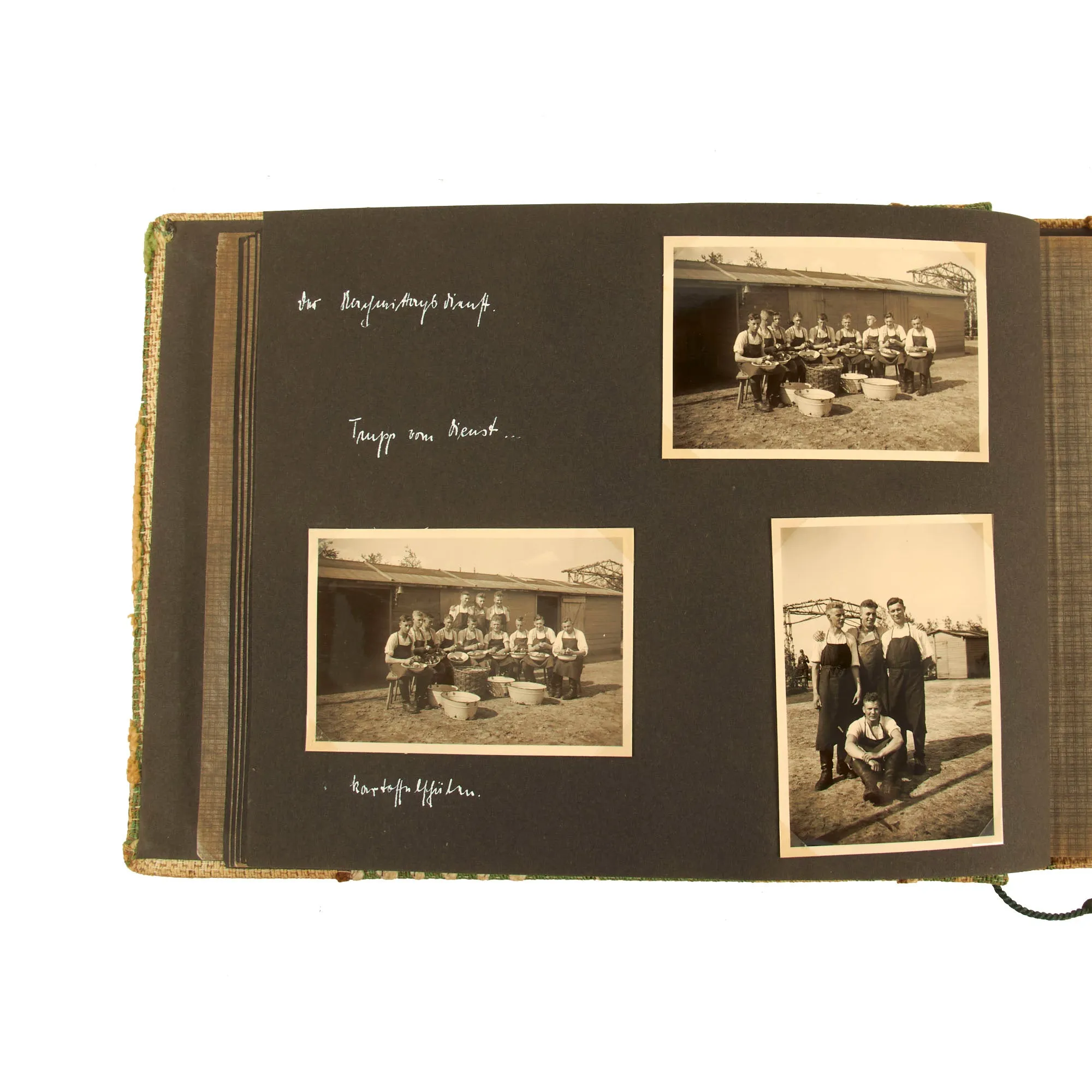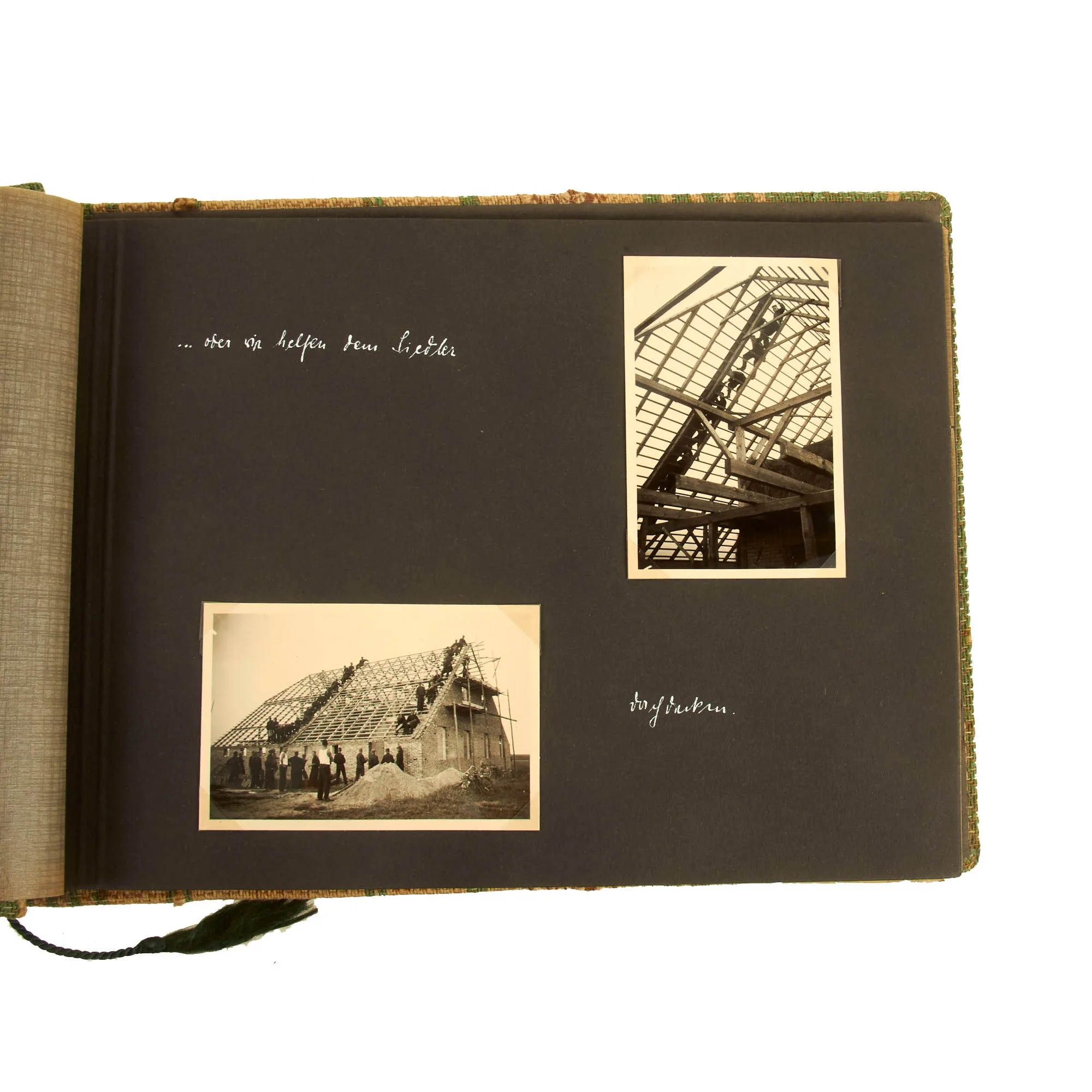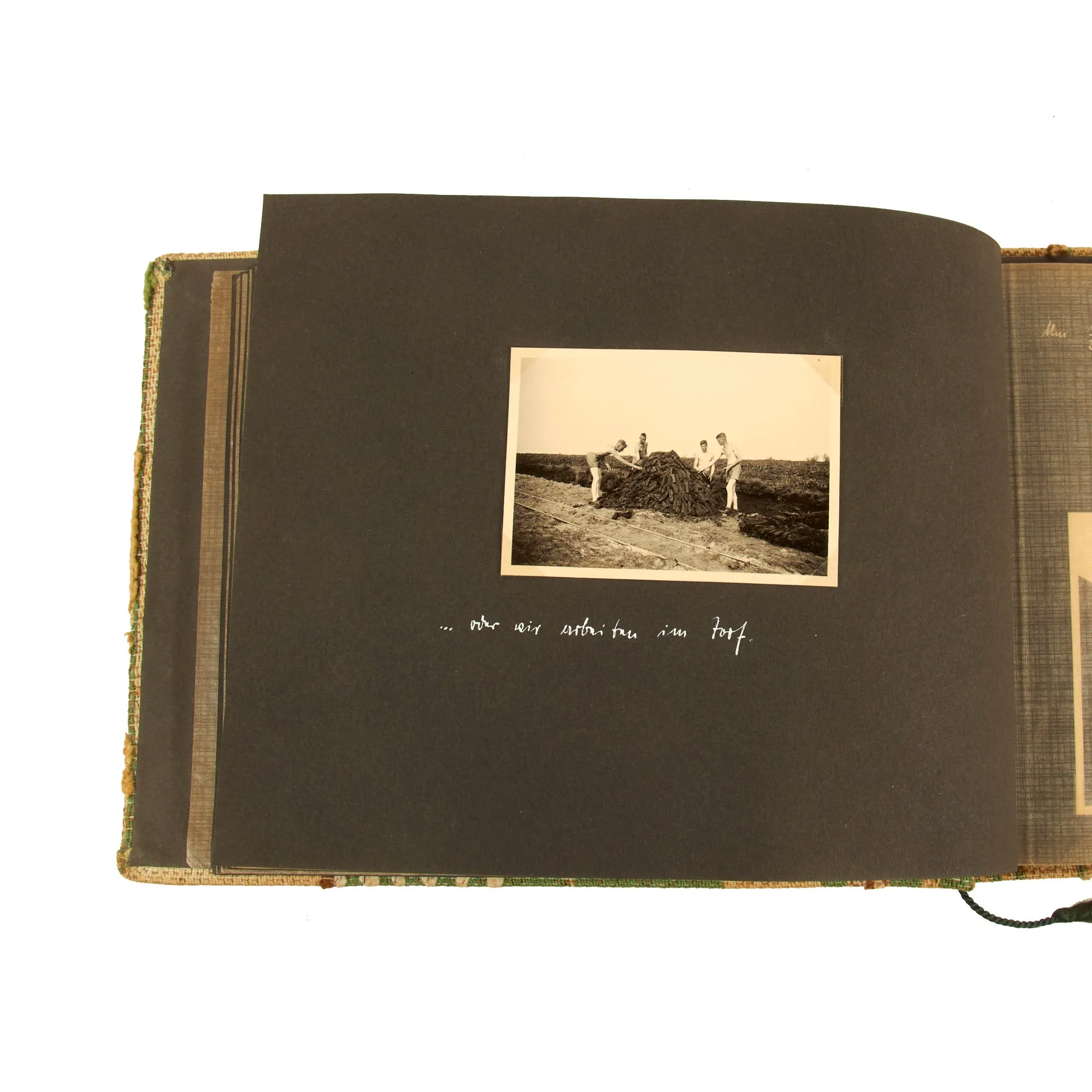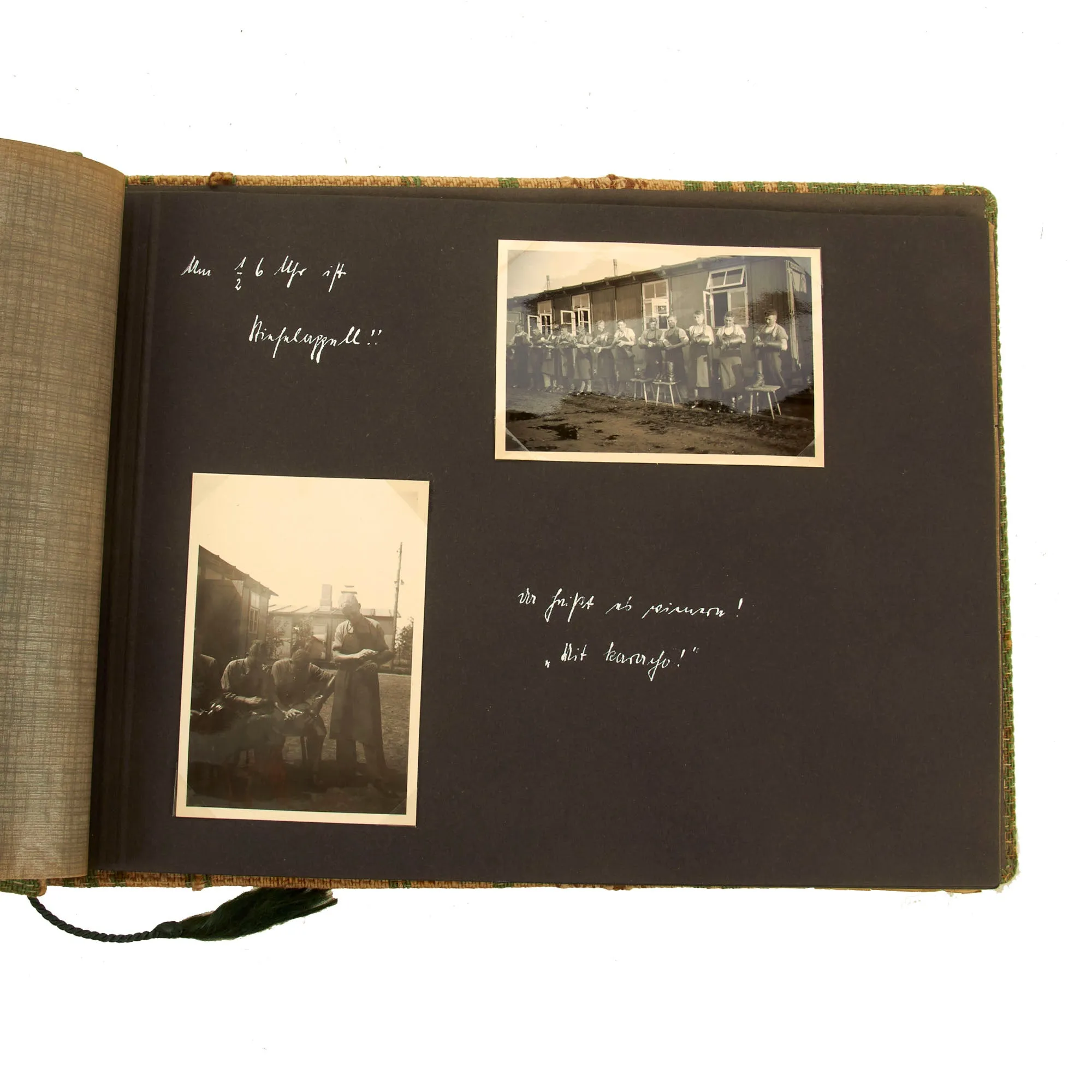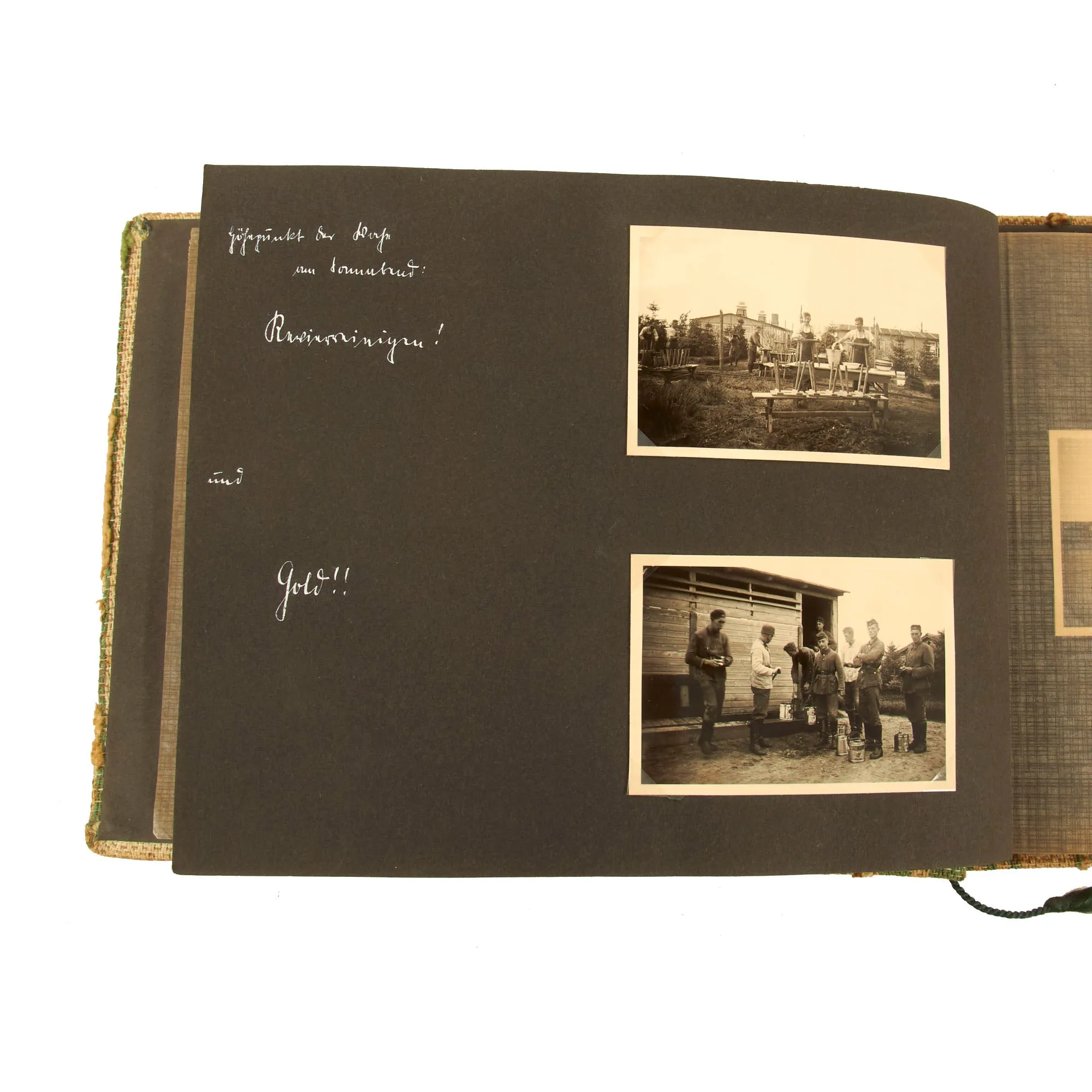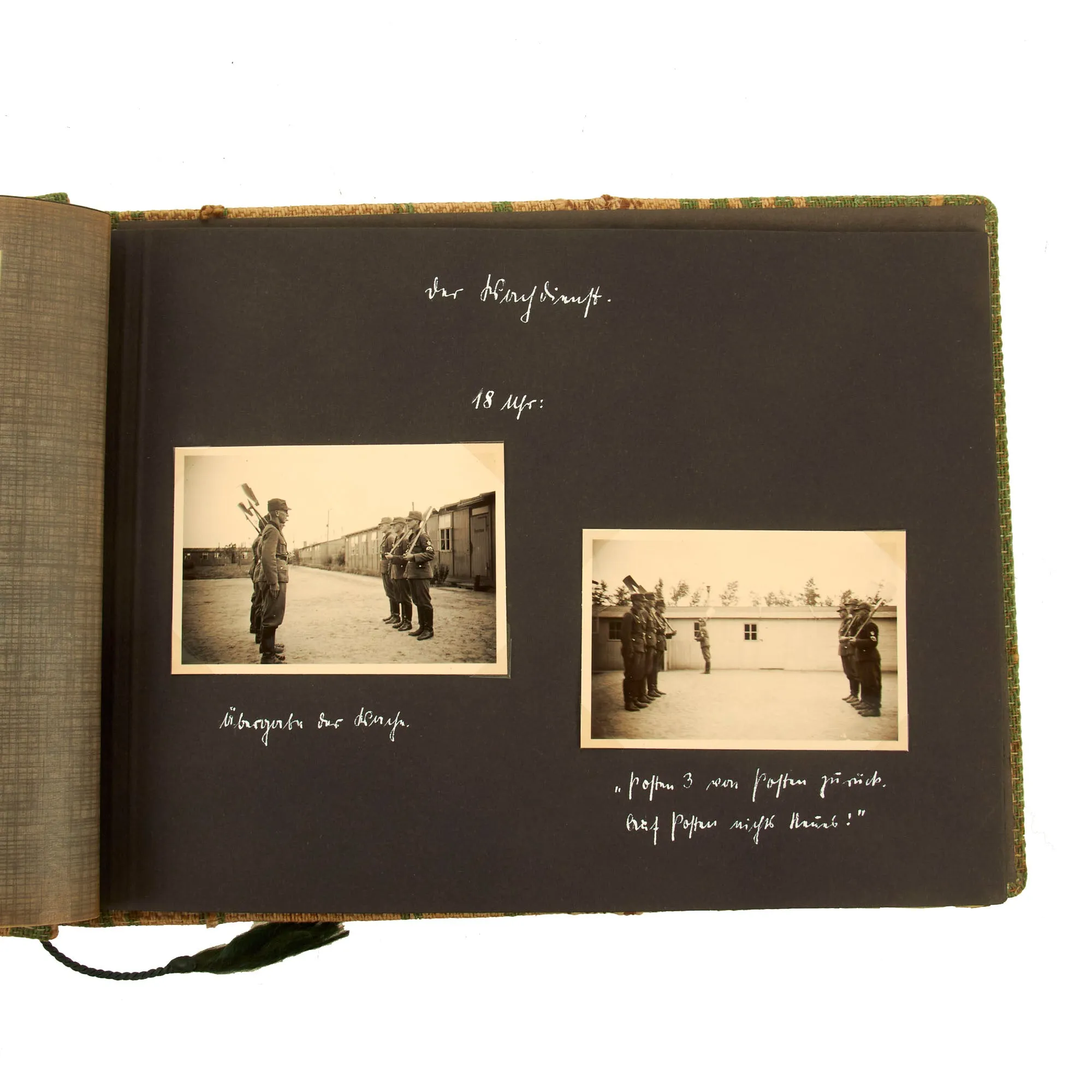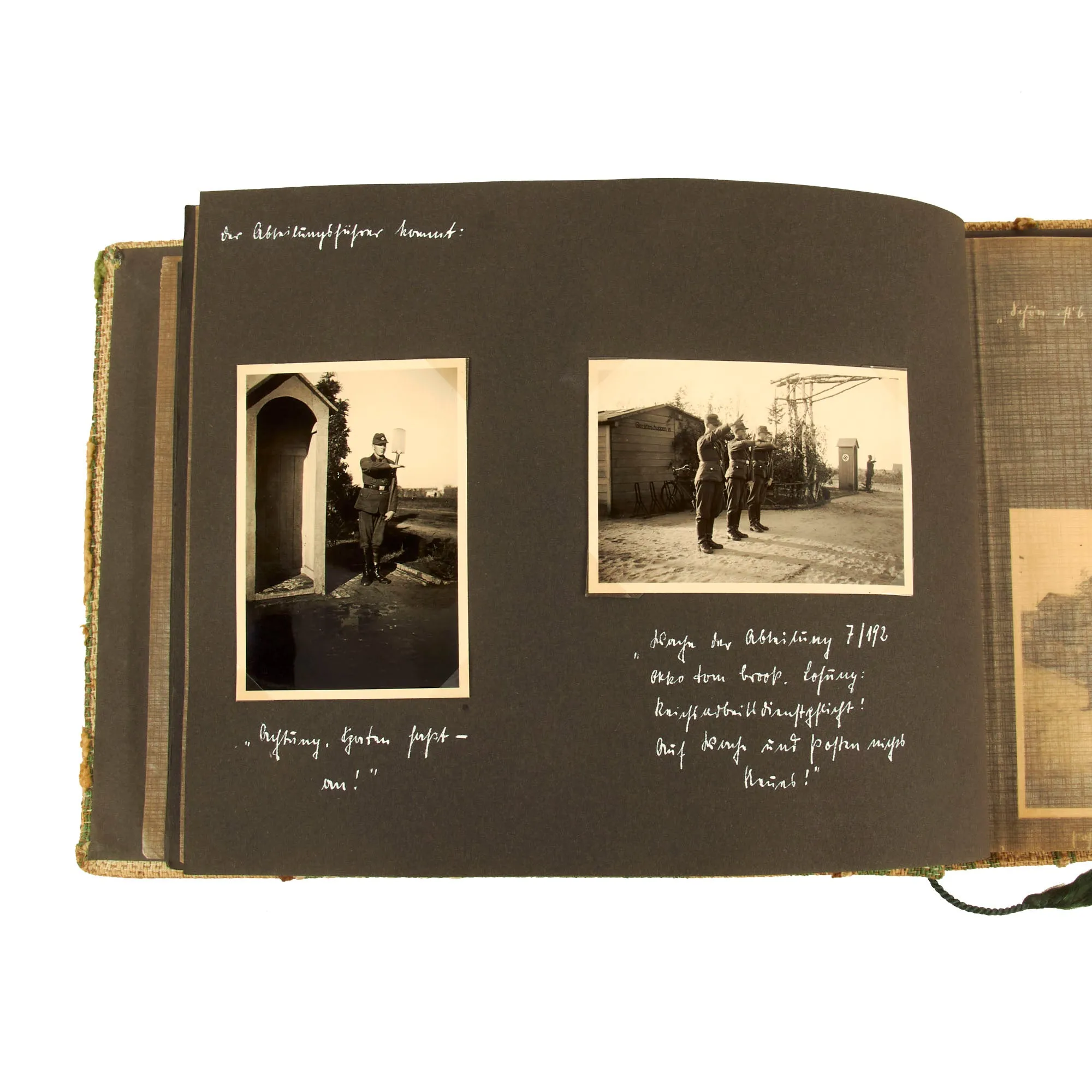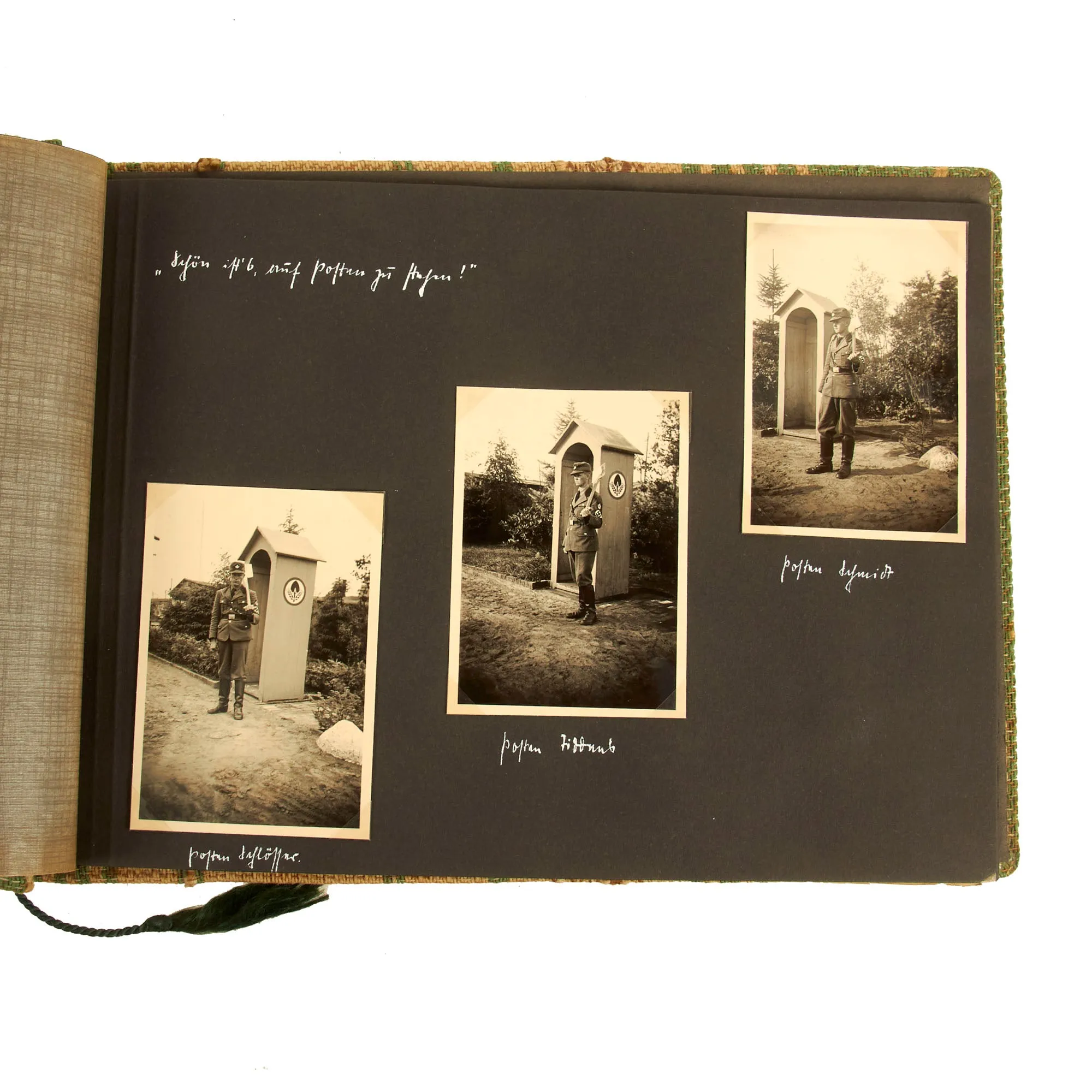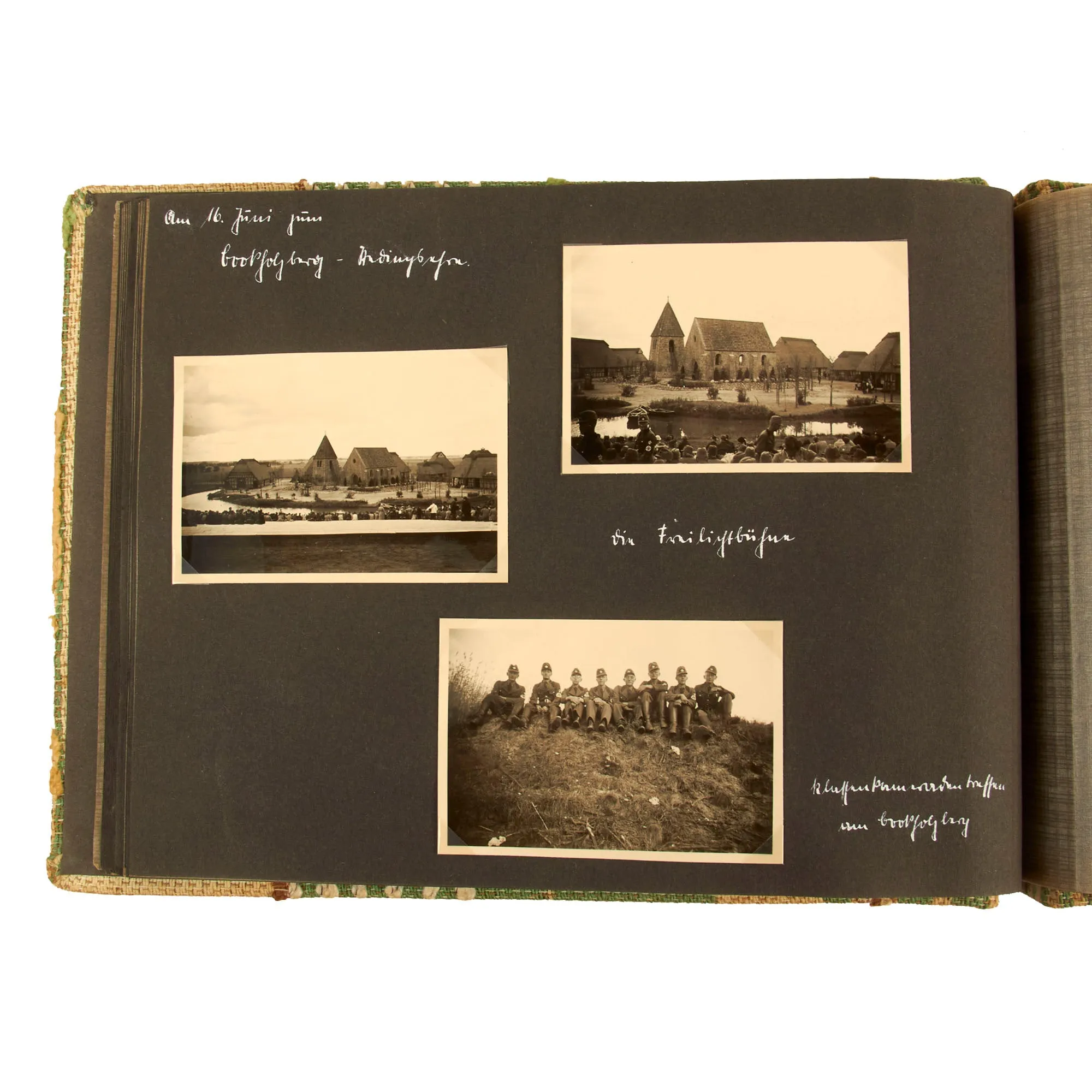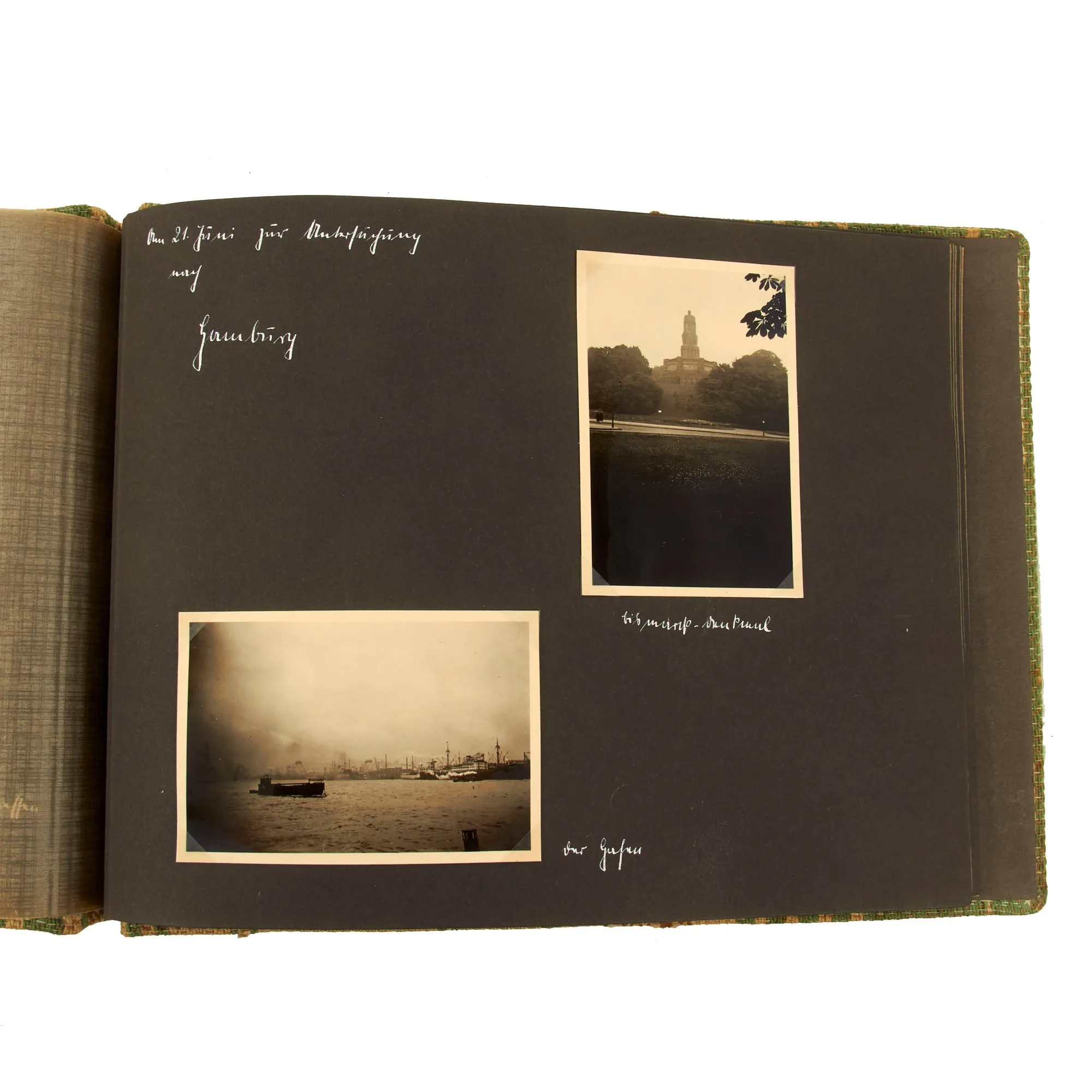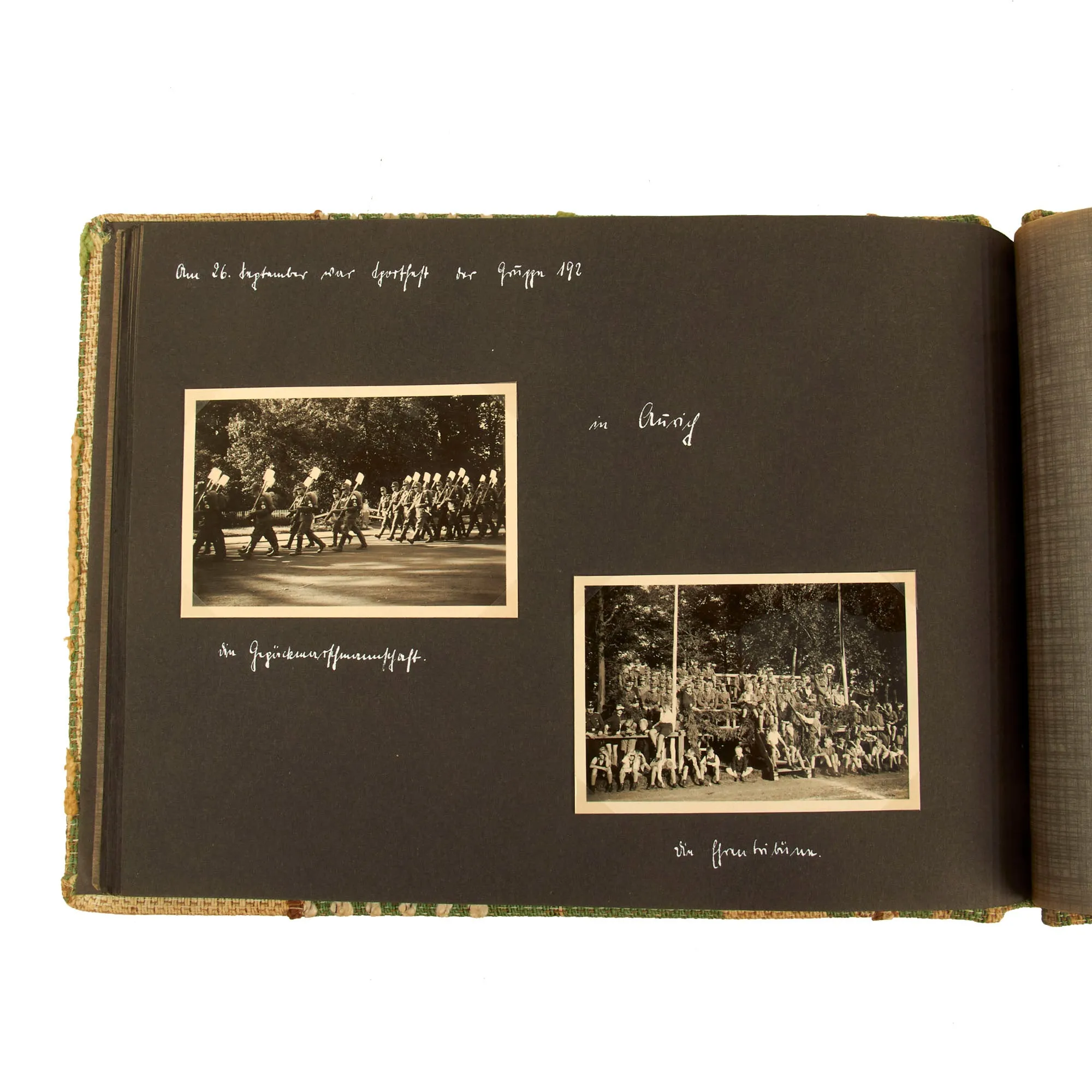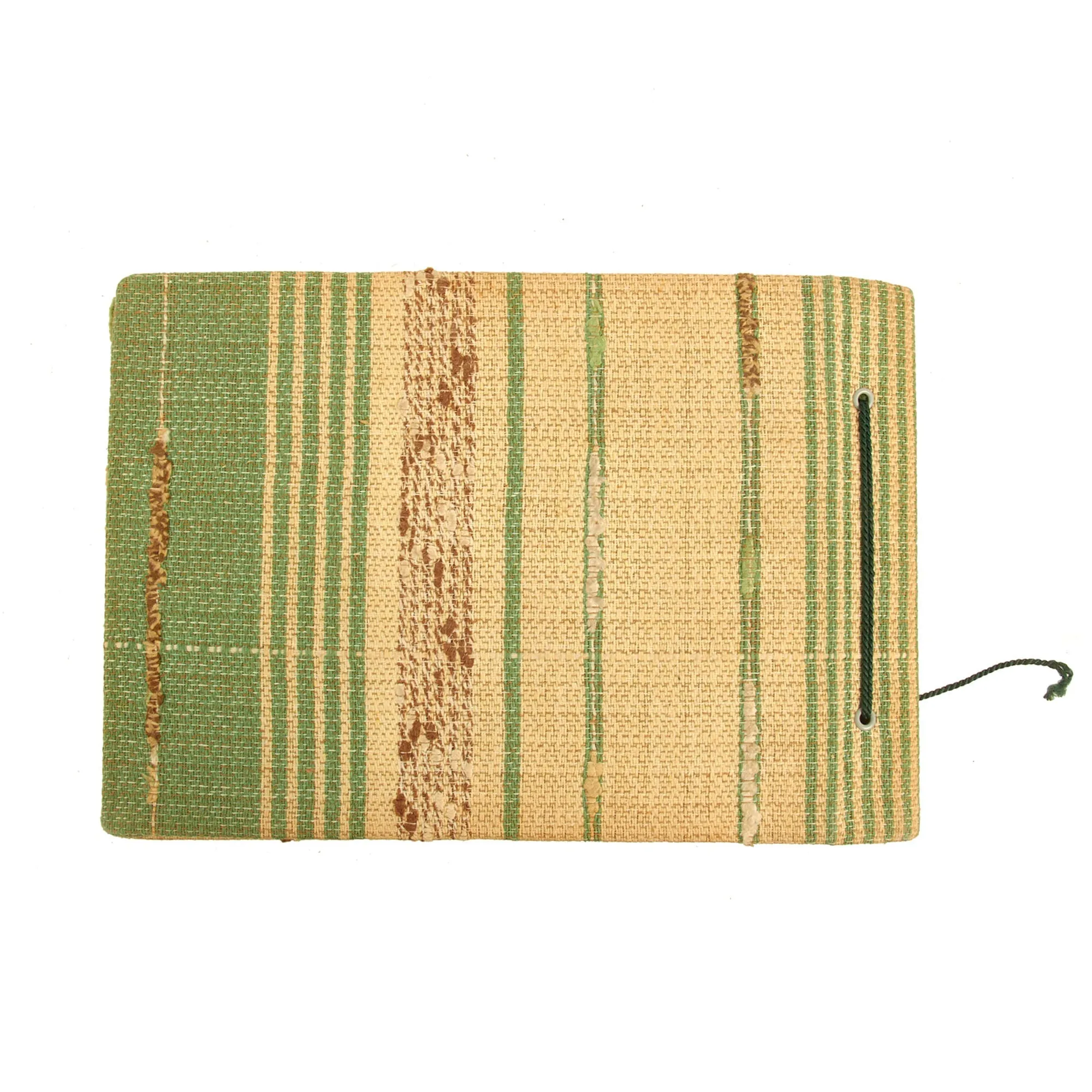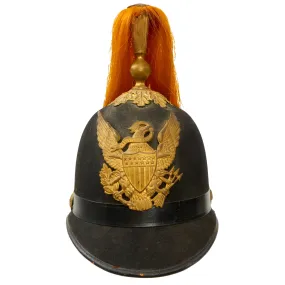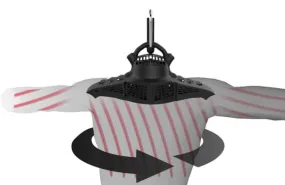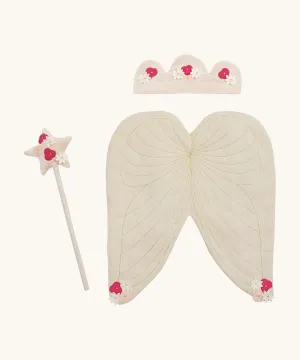Original Item: One-of-a-kind-set. Here we have a wonderful personal photo album grouping, which not only includes many lovely personal photos from their RAD Labor Corps service, but also their MITGLIEDS-KARTE membership and pay book, and even a 15 ½" x 19 ½" portrait! Truly a set with great historical and research potential!
The photo album is contained in a lovely woven fabric cover, secured at the spine by the usual rayon tie, and measures approximately 11” x 7 ½”. A total of 63 photographs fill the pages of this album, making it a treasure-trove of images taken from the viewpoint of a young, patriotic German soldier. These are contained on the first 18 out of 23 pages, which are all separated by the "onion skin" separators, which keeps the photos from sticking together. The photos all look to be attached with transparent corner attachments, and they are in really good shape.
The first page of the album actually gives the unit information of the owner: Stapelermoor. Abt. 7/192., for being stationed in the Hamlet of Stapelermoor in the far North West of Germany, which remains a major farming area. Below this is the date of 3. April - 23 Okt. 1937., which should indicate the time period covered by the album. The pictures inside show the members of the RAD working, training, and involved in recreation, and just about all also have captions in white ink, which is definitely difficult for us to read. This album alone would definitely make a fantastic transcription and translation project!
The membership book and portrait are both in good shape, though unfortunately we are not able to read the writing. The portrait is on heavy cardstock, and looks to have taken some water damage at some point, in addition to the scratches on the surface. The membership book has all of the correct stampings, and even applied stamps inside indicating work completed.
A fantastic photo album set, full of research potential!!!
Historical records like these albums have become priceless time capsules that provide an incomparable level of insight into the individual experience of the Second World War, now that almost eighty years have passed.
Context is everything when preserving old photo albums. The order in which an album was put together meant something to the creator and may give you clues about the
photographs if they’re not identified. If at all possible, keep old albums in their original order. It’s okay to remove loose photos, but make a note of where they came from.
The older albums such as these usually withstand the ravages of time. The leather or fabric covers may wear, but the pages stay well intact. The black paper albums of the early 20th century are more fragile, while the glue from magnetic albums can damage photographs. And, as with all old photographs, keep albums in a safe, climate controlled environment.
The basis of the RAD, Reichsarbeitsdienst, (National Labor Service), dates back, at least, to 1929 with the formation of the AAD (Anhalt Arbeitsdienst) and the FAD-B (Freiwillingen Arbeitsdienst-Bayern). Shortly after AH’s appointment as Chancellor in Jan 1933, the NSDAP consolidated all labor organizations into the NSAD (Nationalsozialist Arbeitsdienst), a national labor service. It served as an agency to help mitigate the effects of unemployment on the German economy, militarize the workforce and indoctrinate it with NSDAP ideology. It was the official state labor service, divided into separate sections for men and women.
On June 26 1935 the NSAD was officially re-designated RAD. Originally personnel serving with RAD wore a variety of earlier FAD/NSAD belt buckles until February 15TH 1936 when new pattern belt buckles for Officer’s and EM/NCO’s were introduced to provided uniformity in dress.




